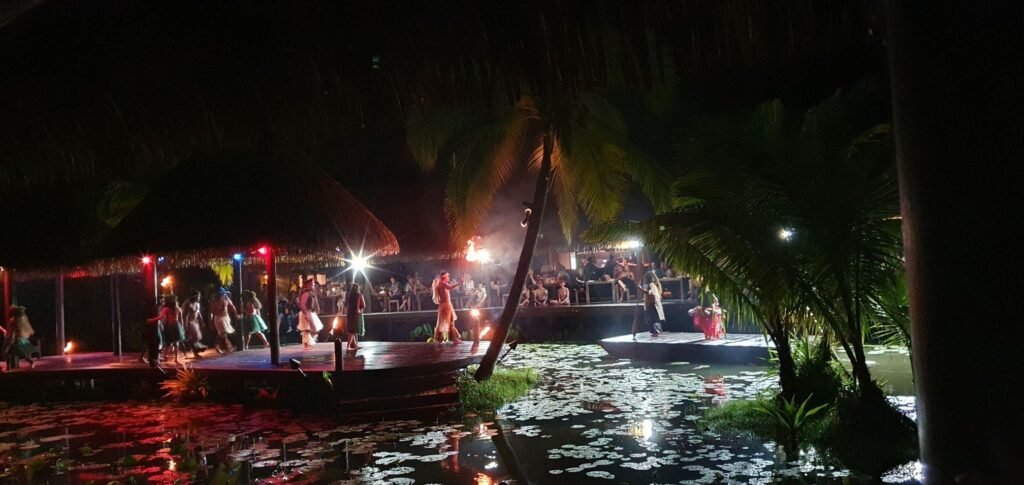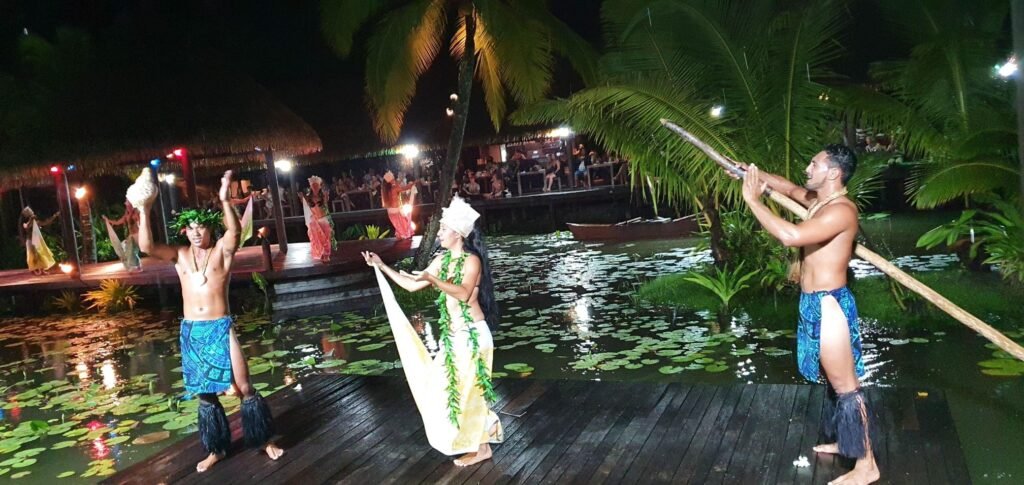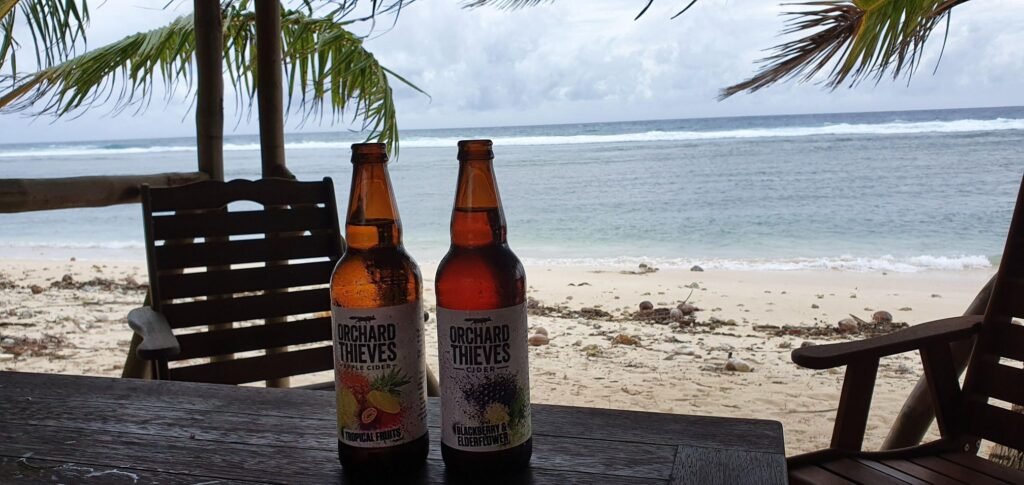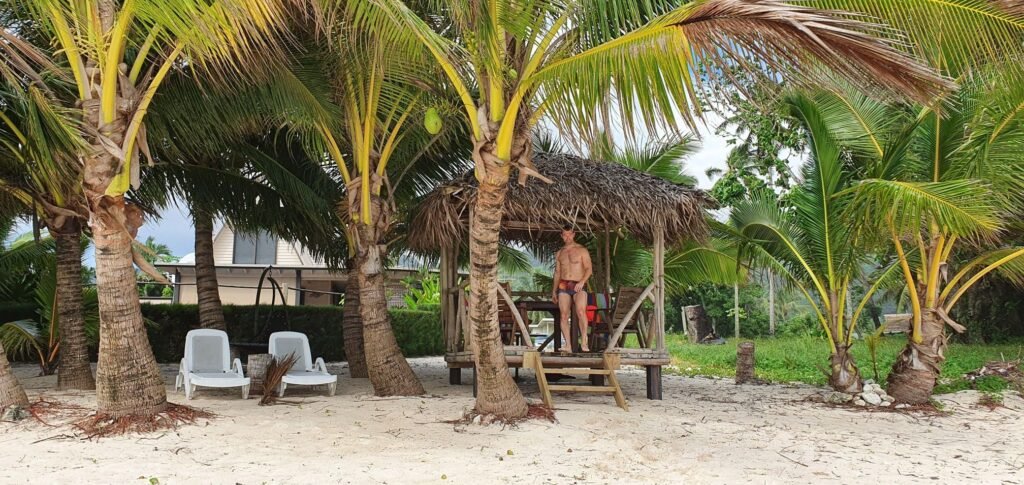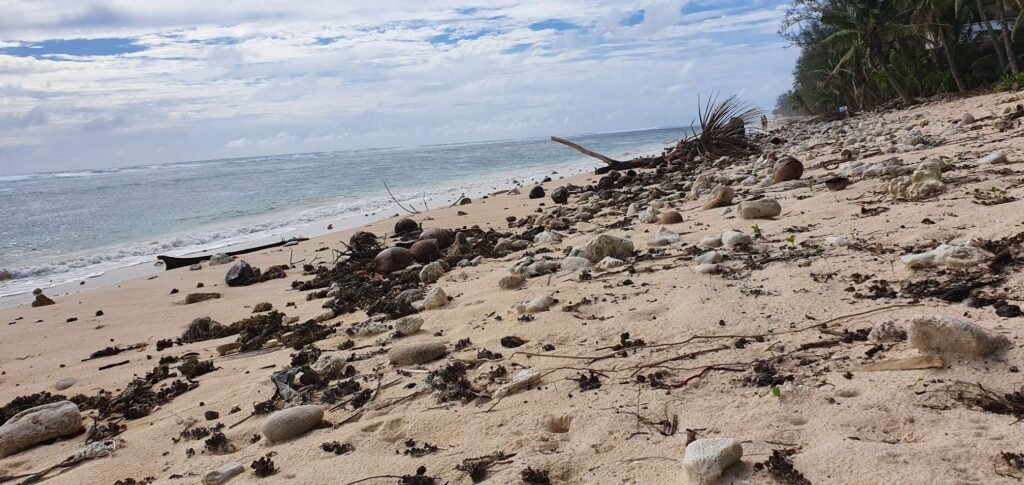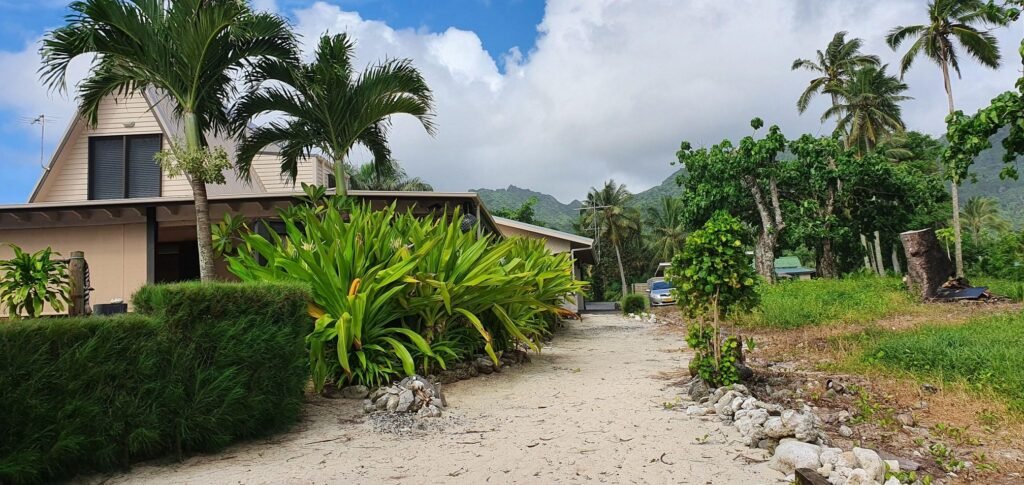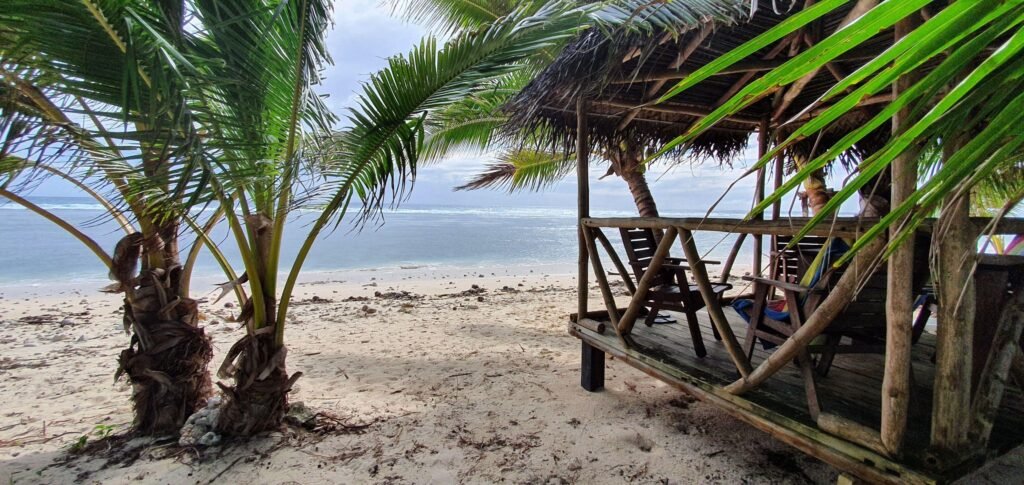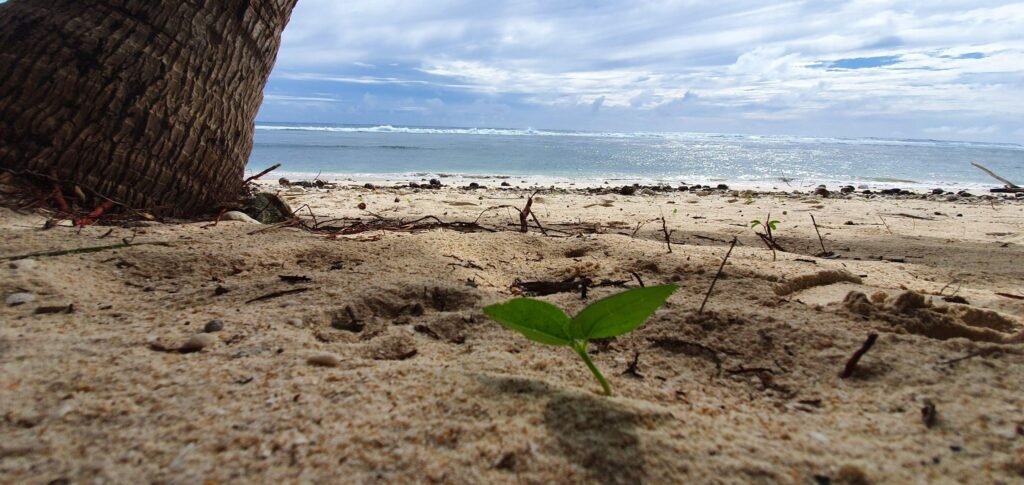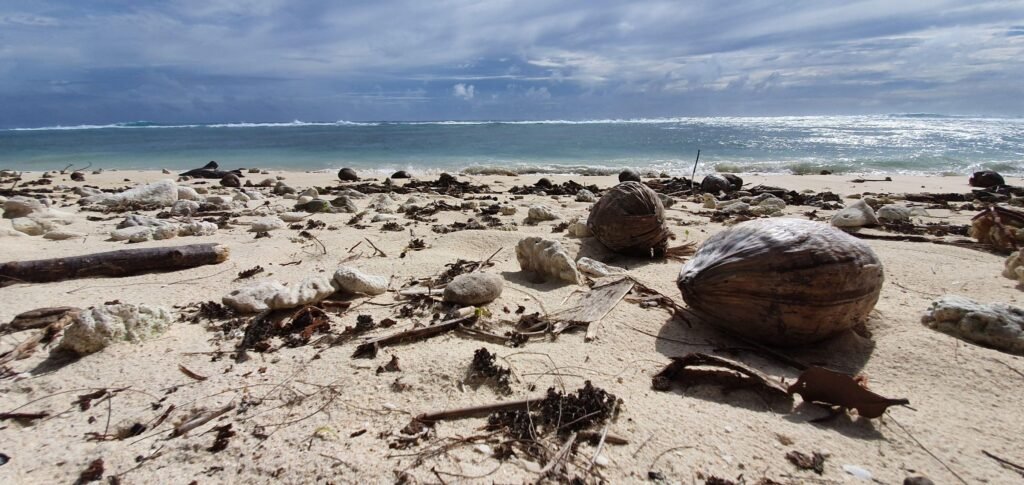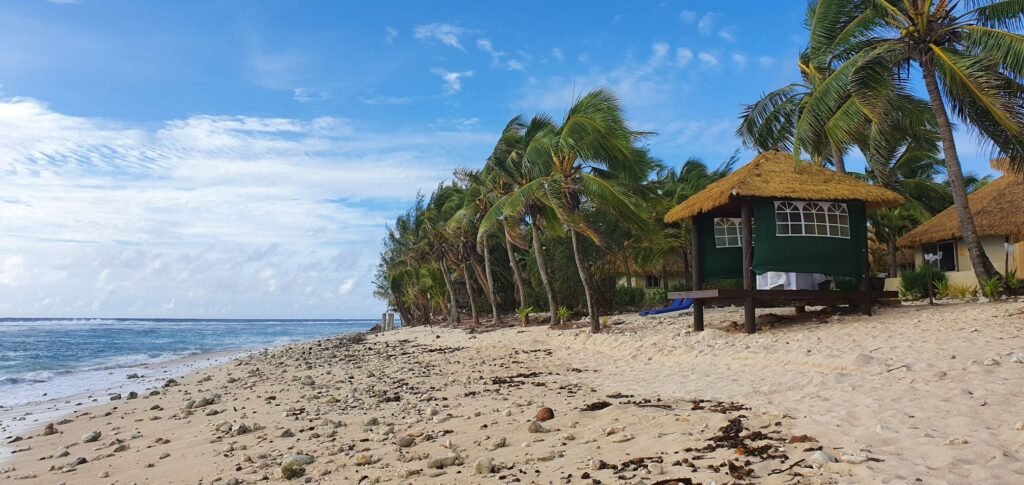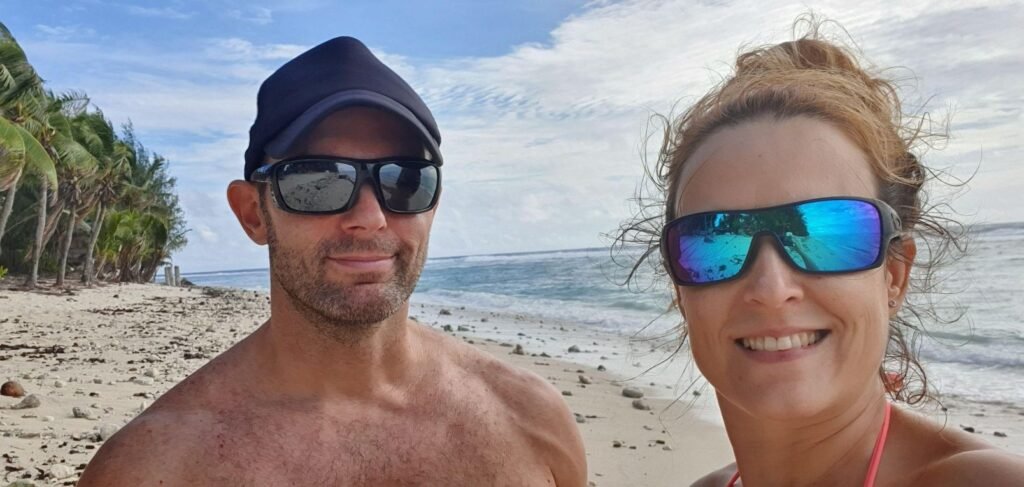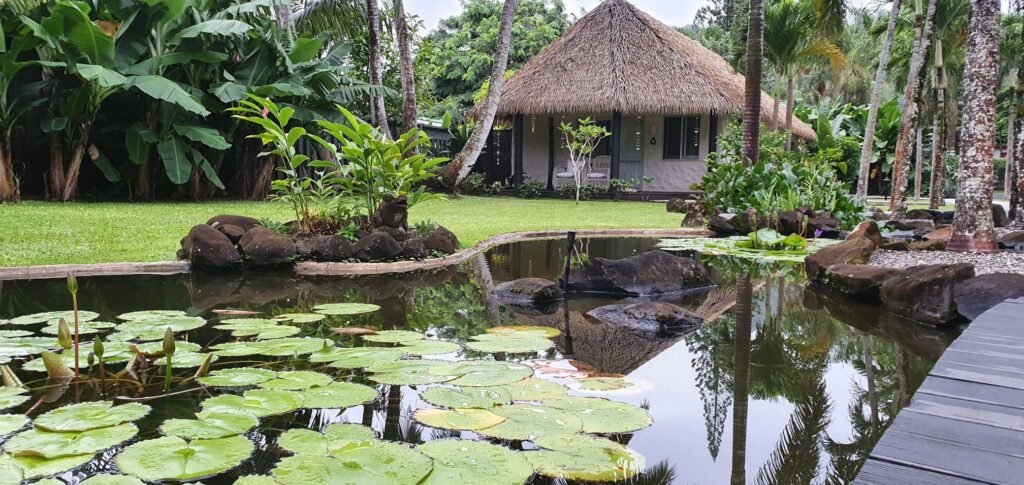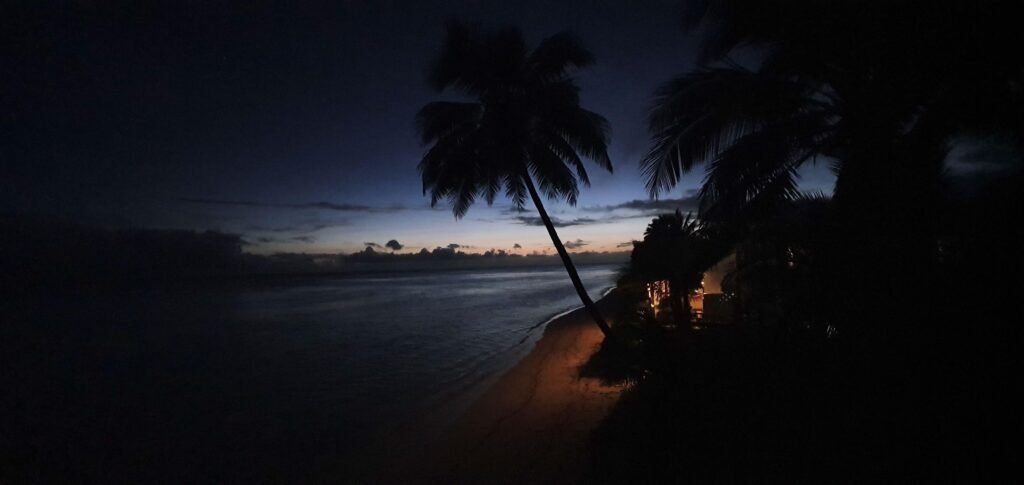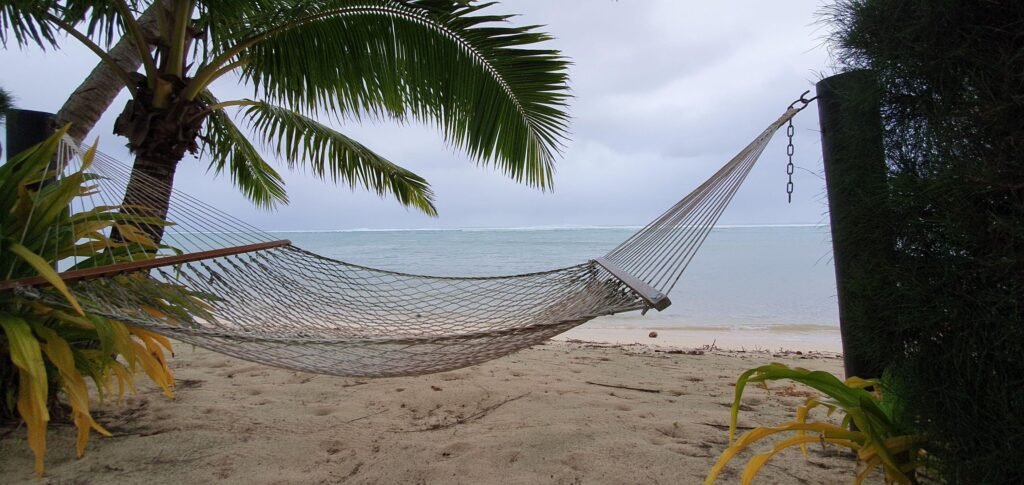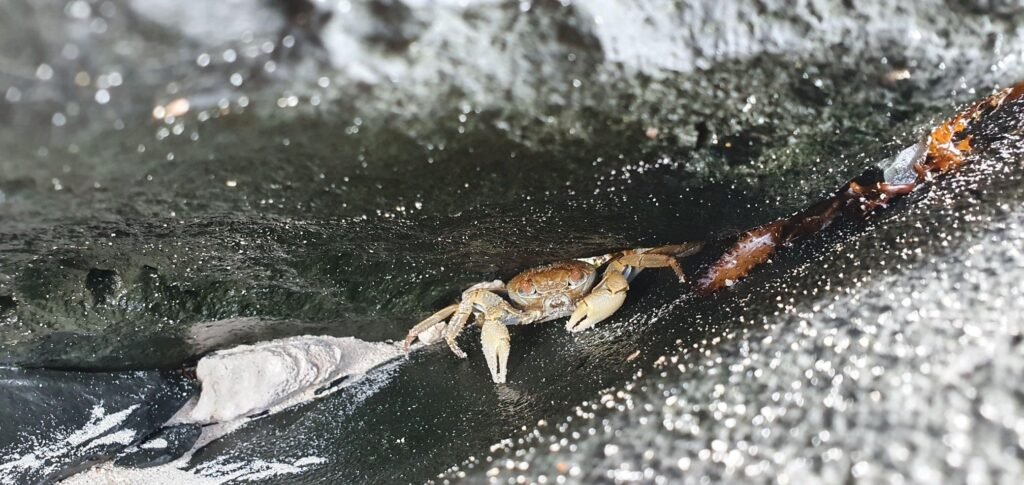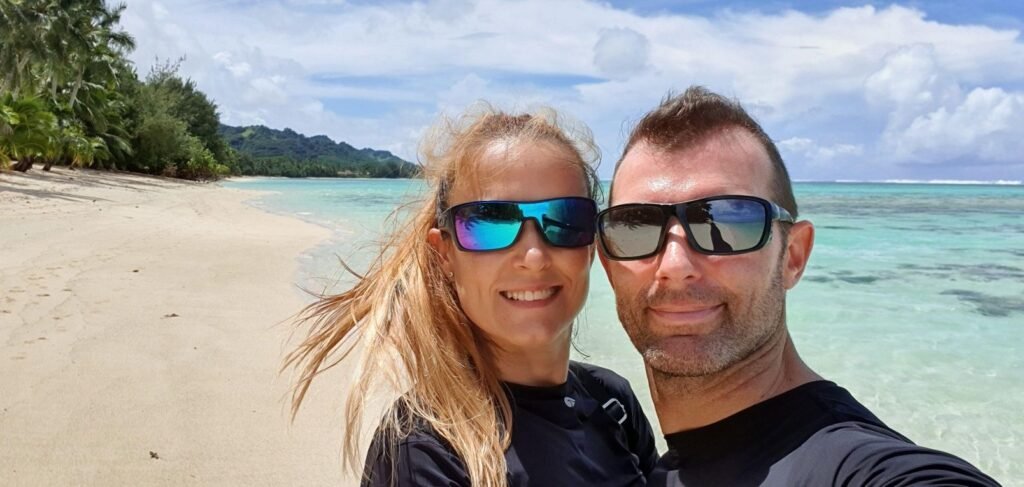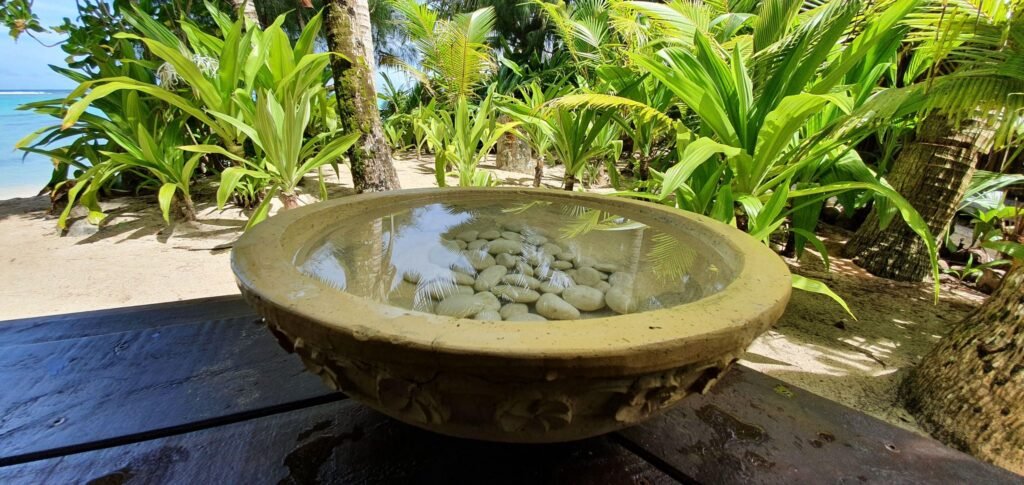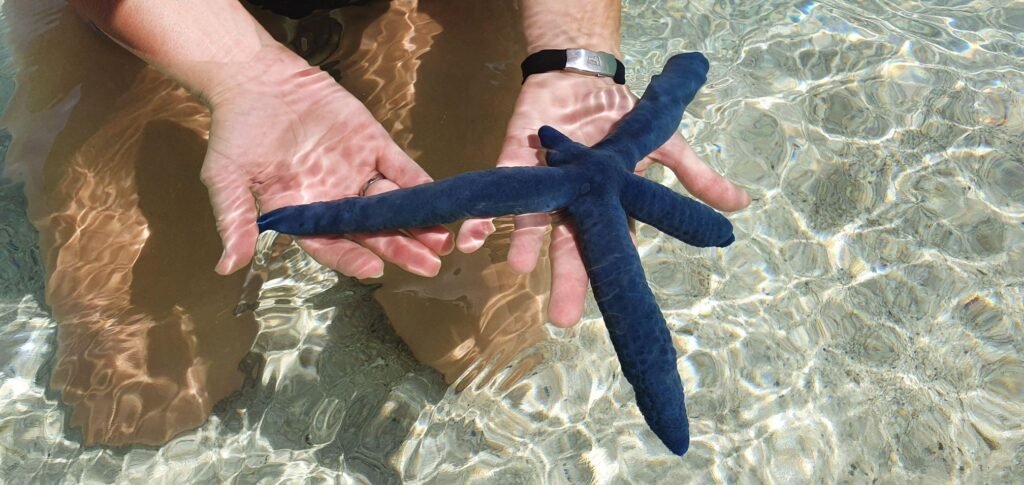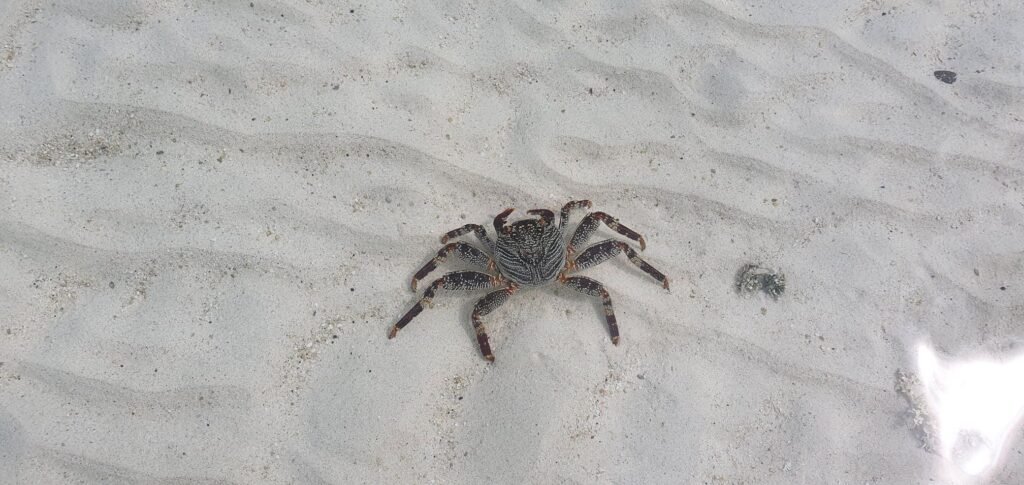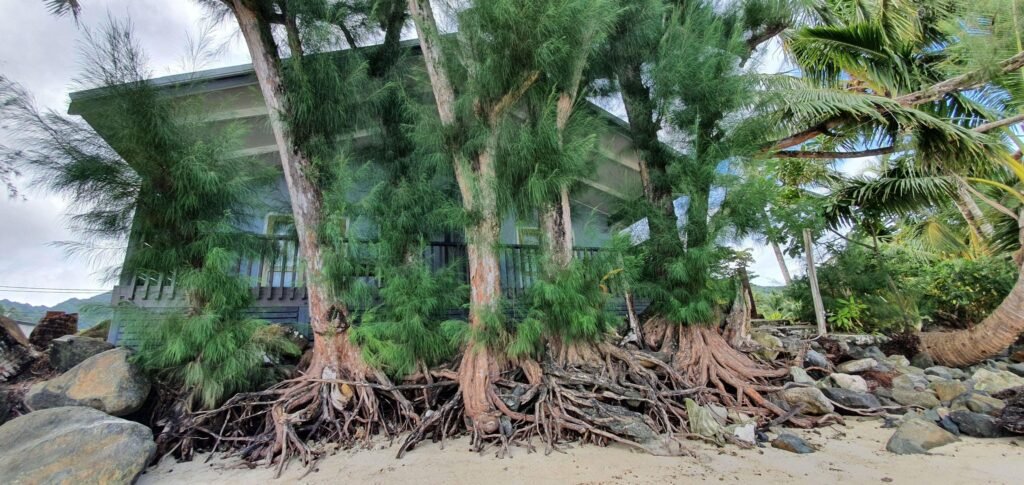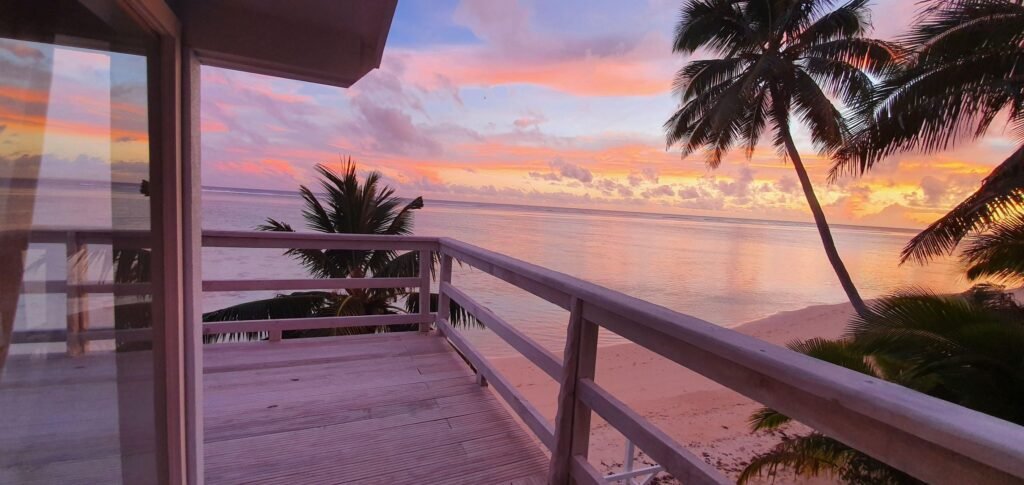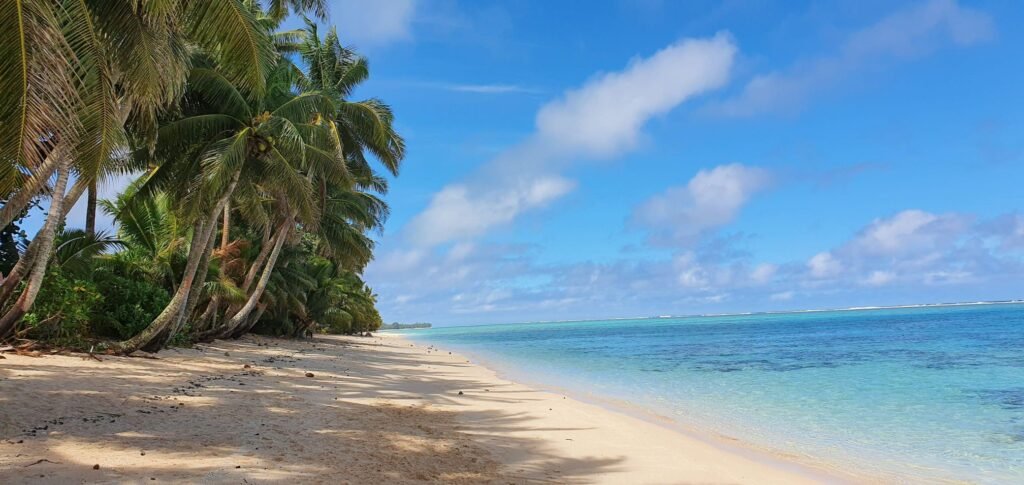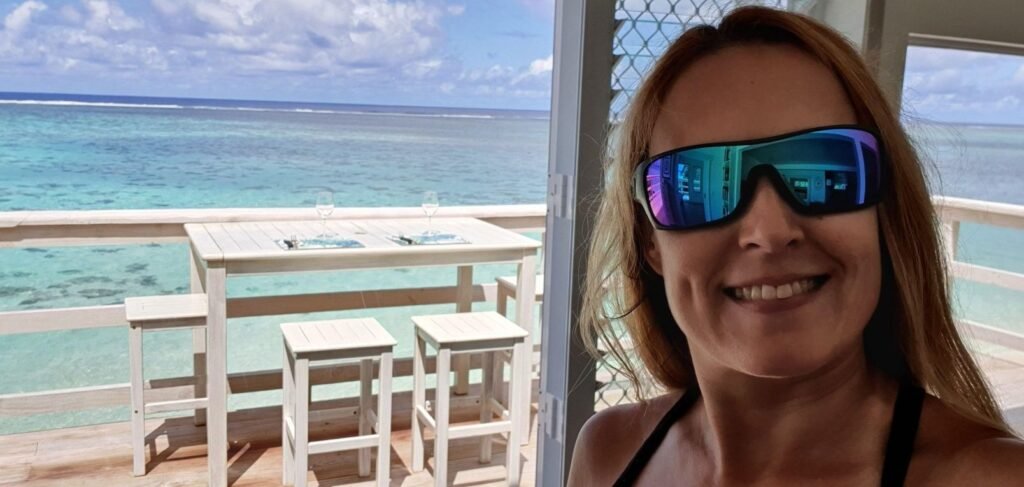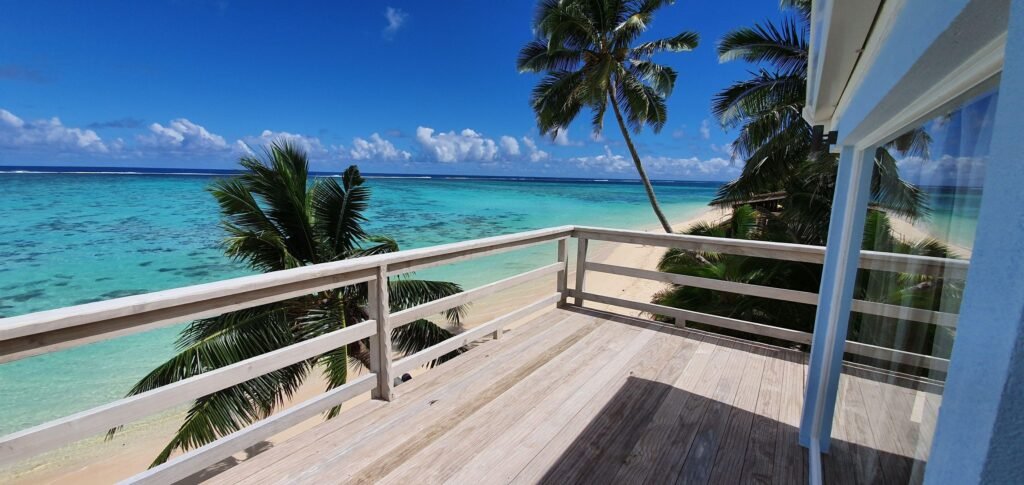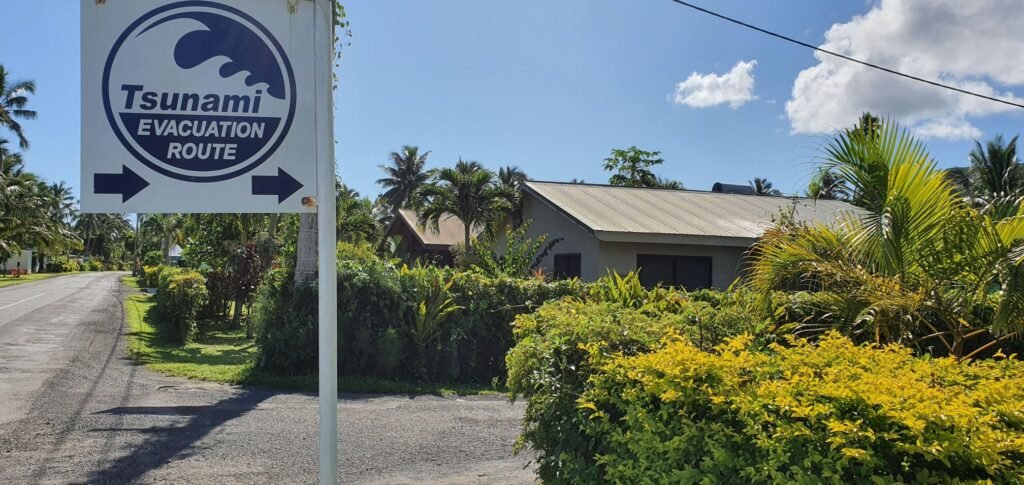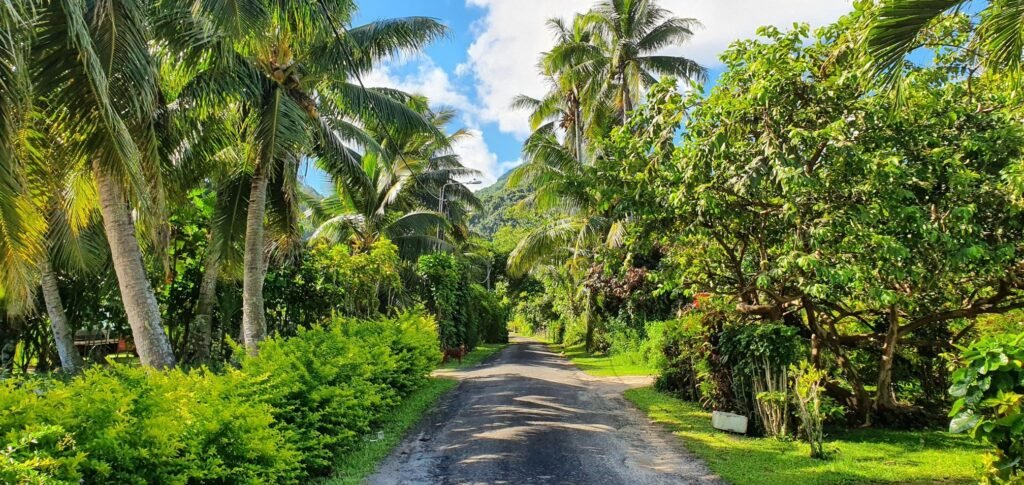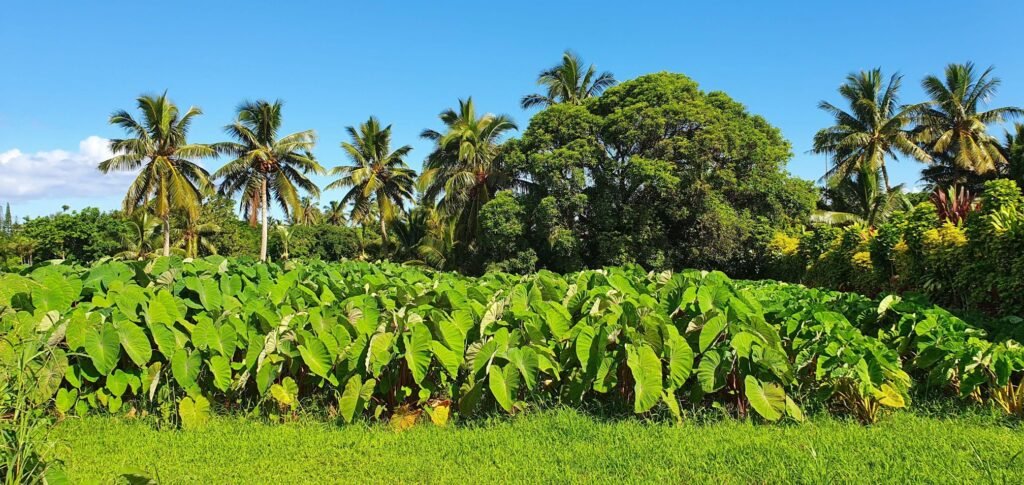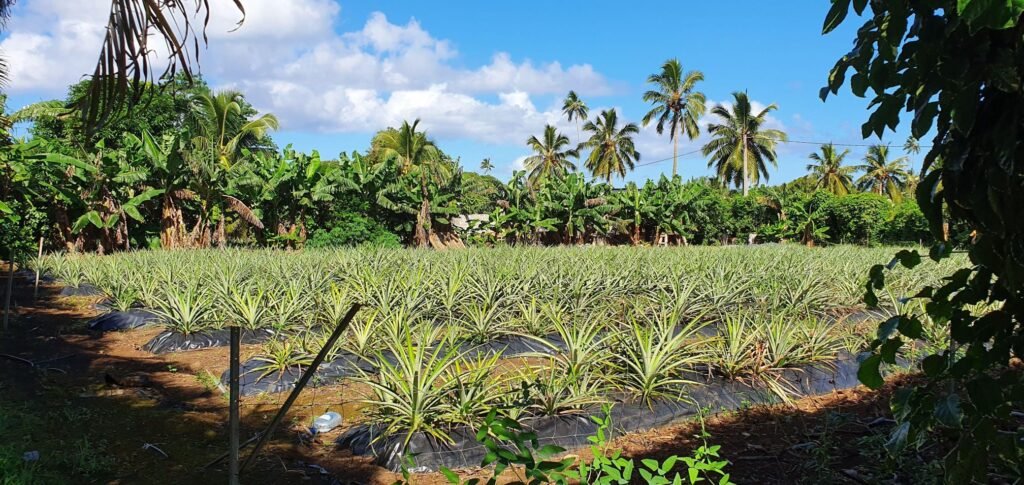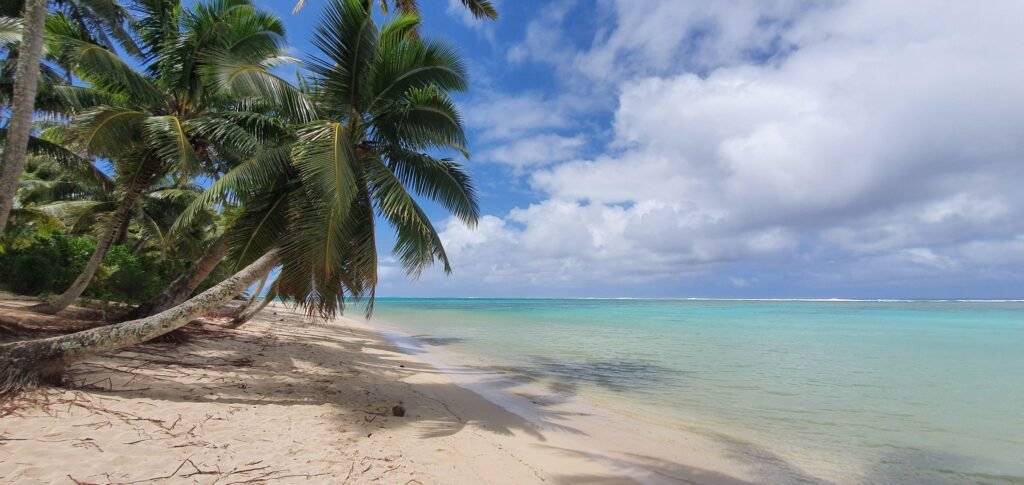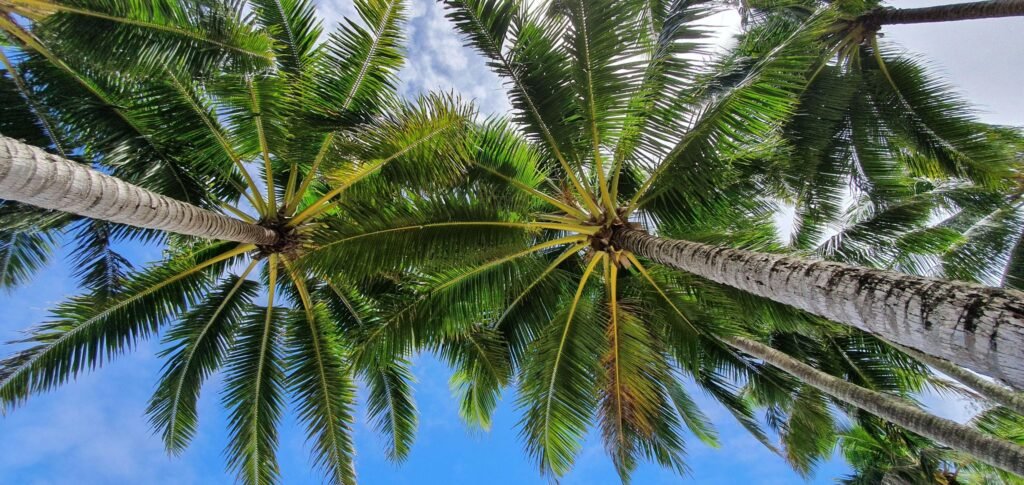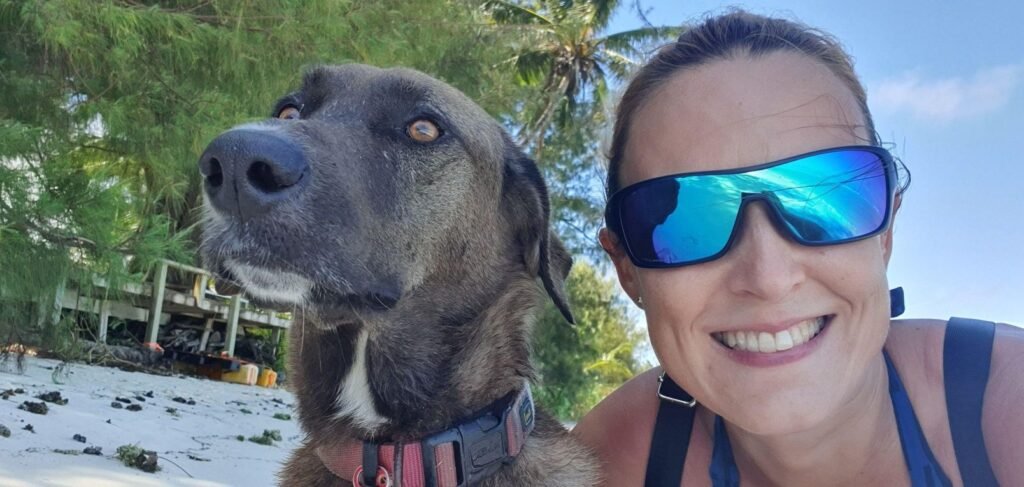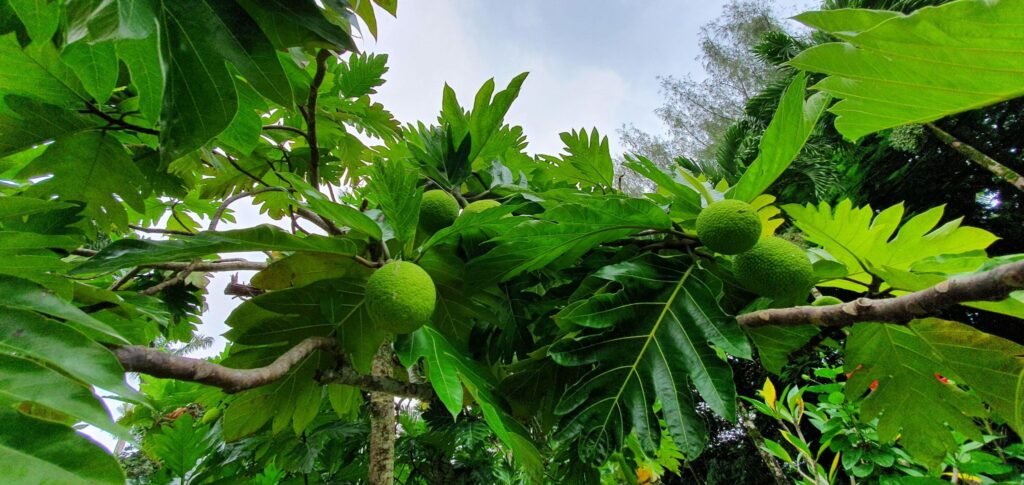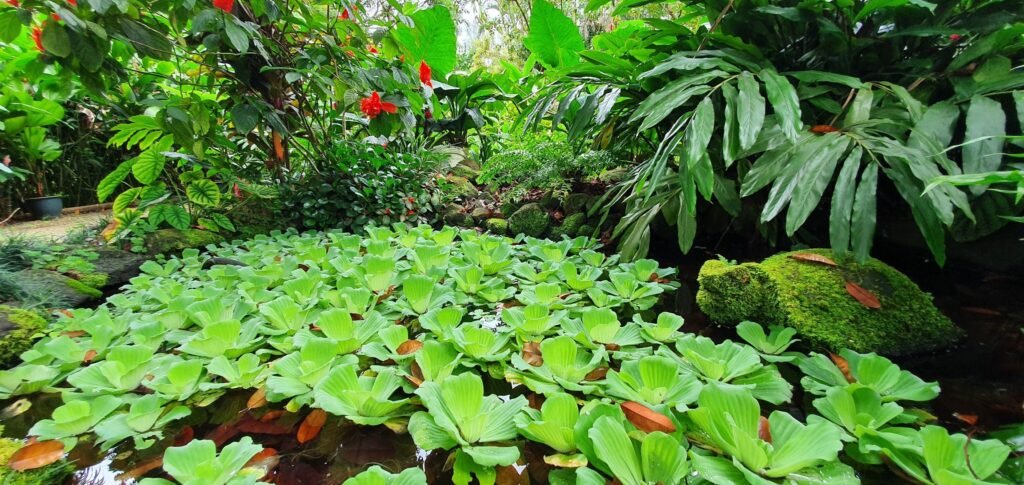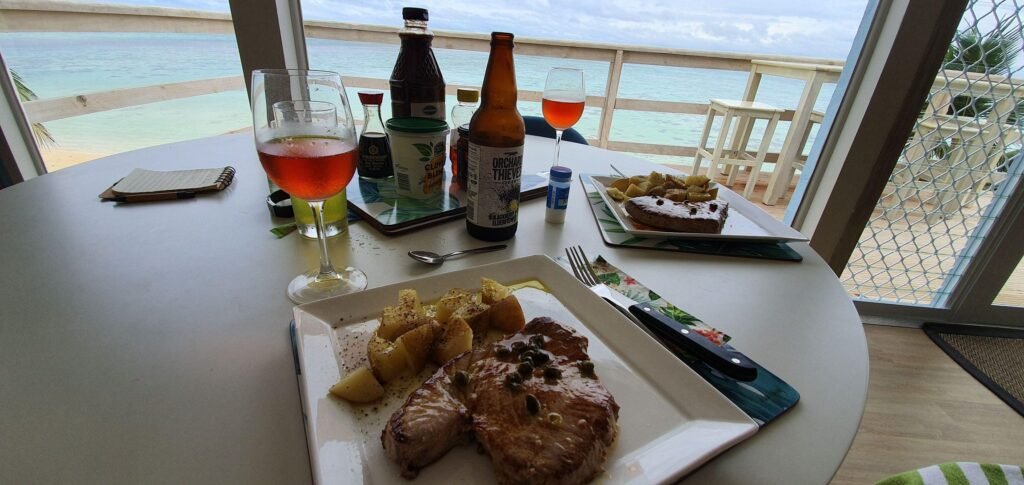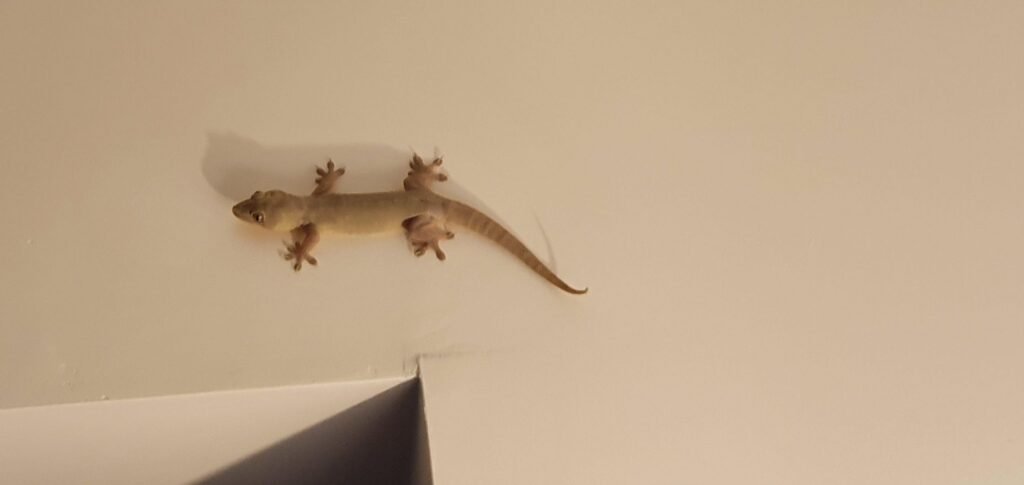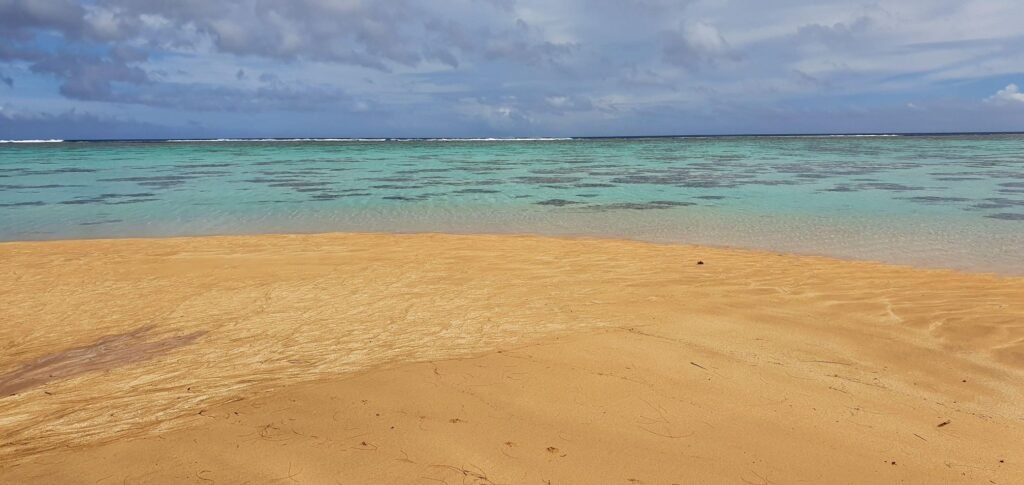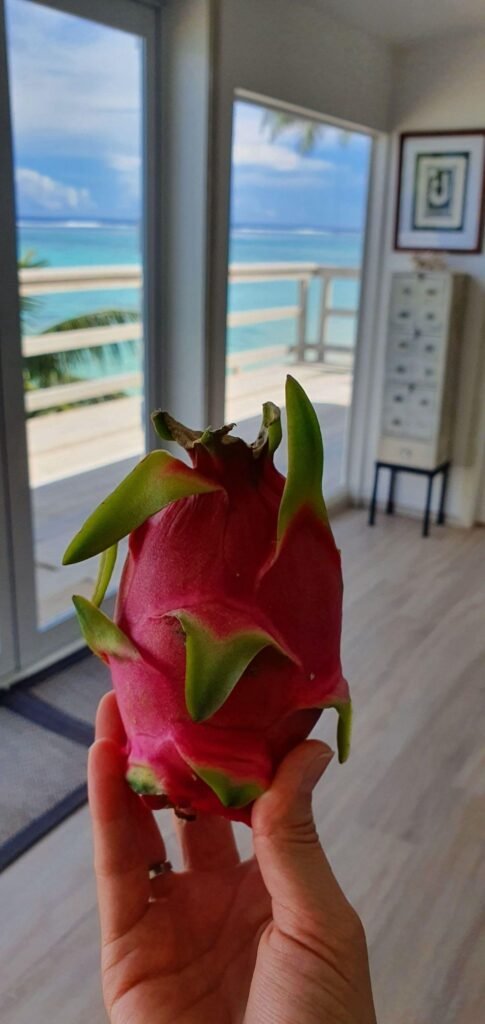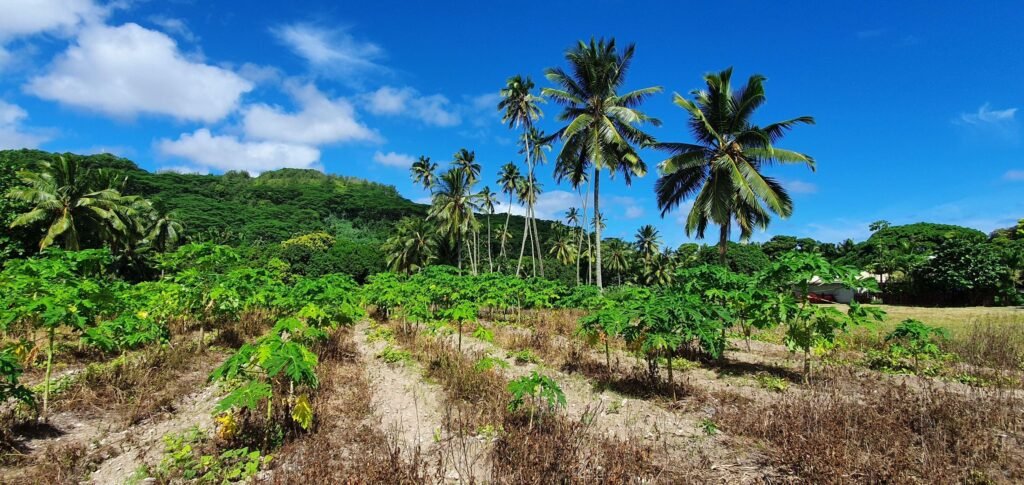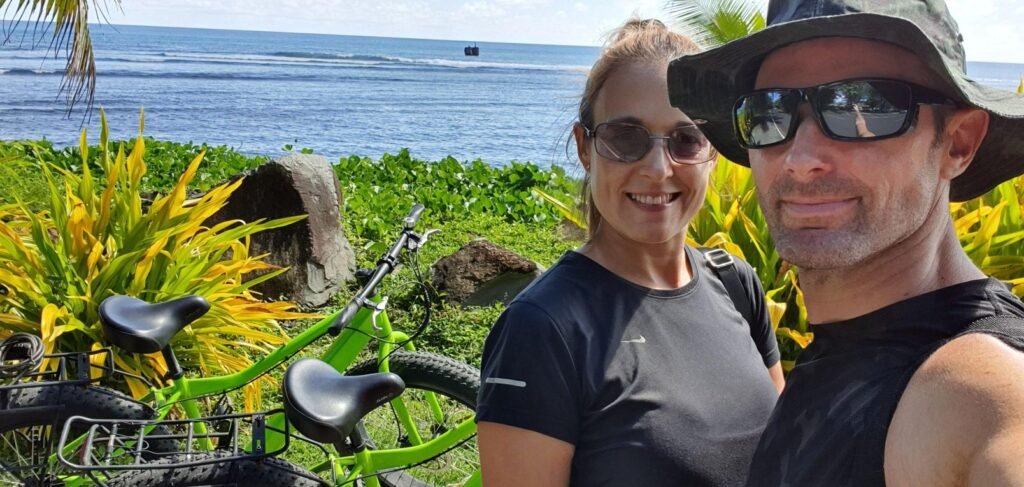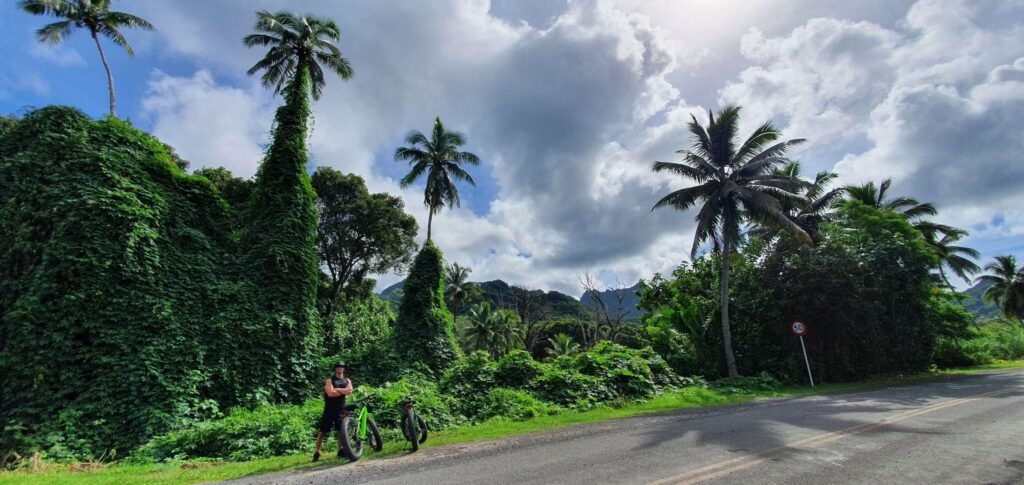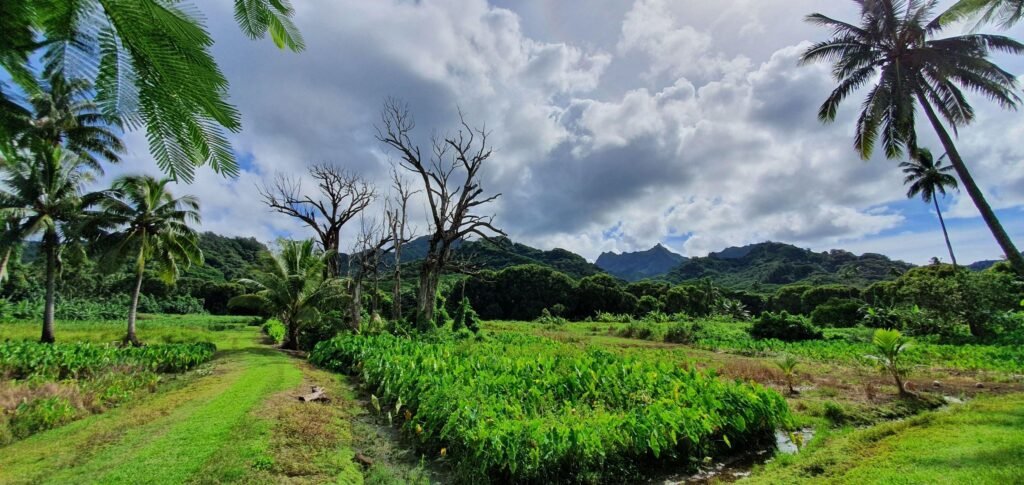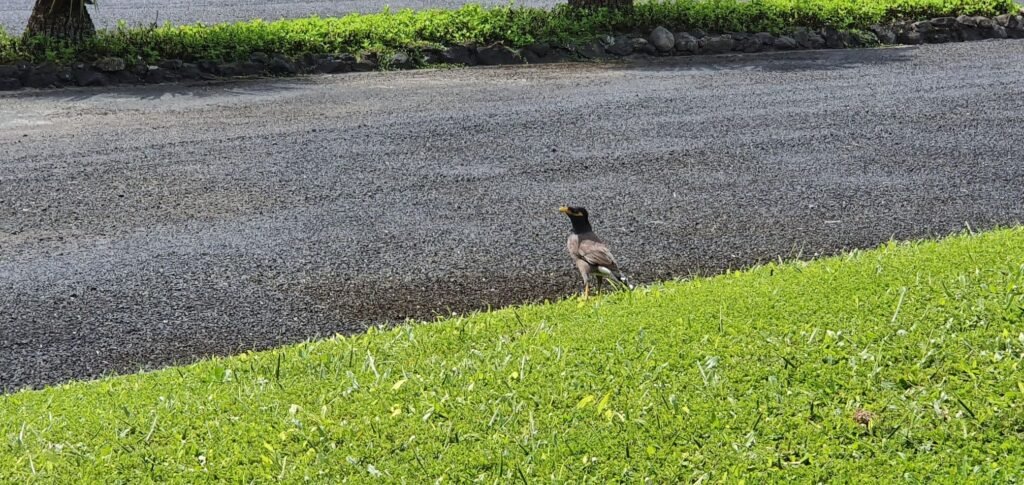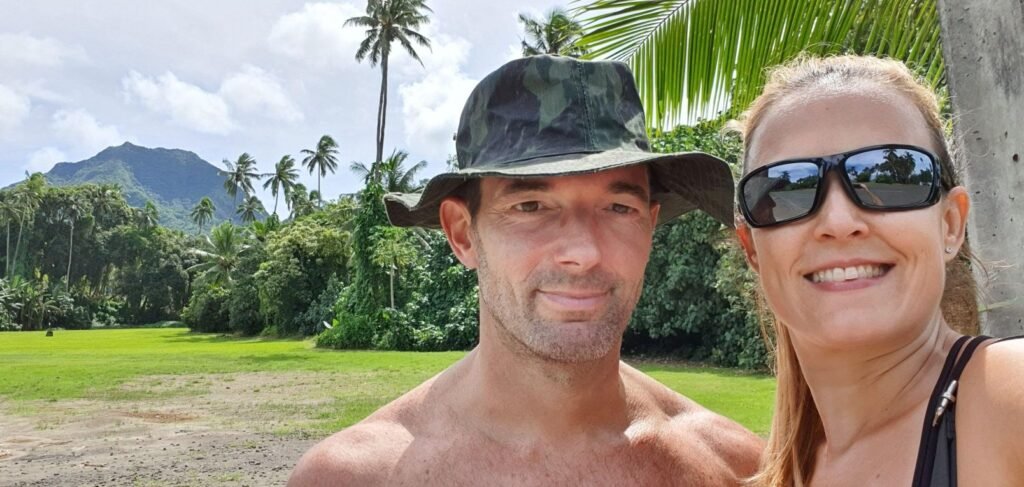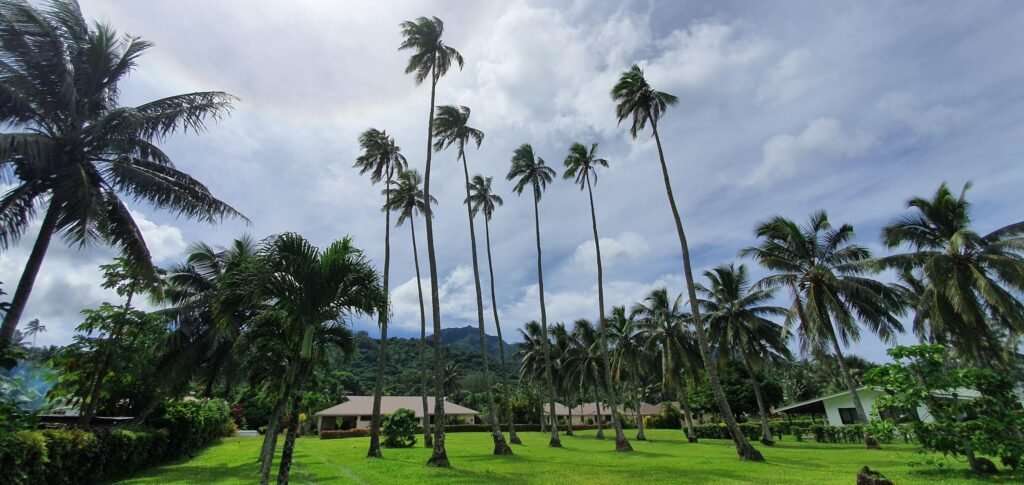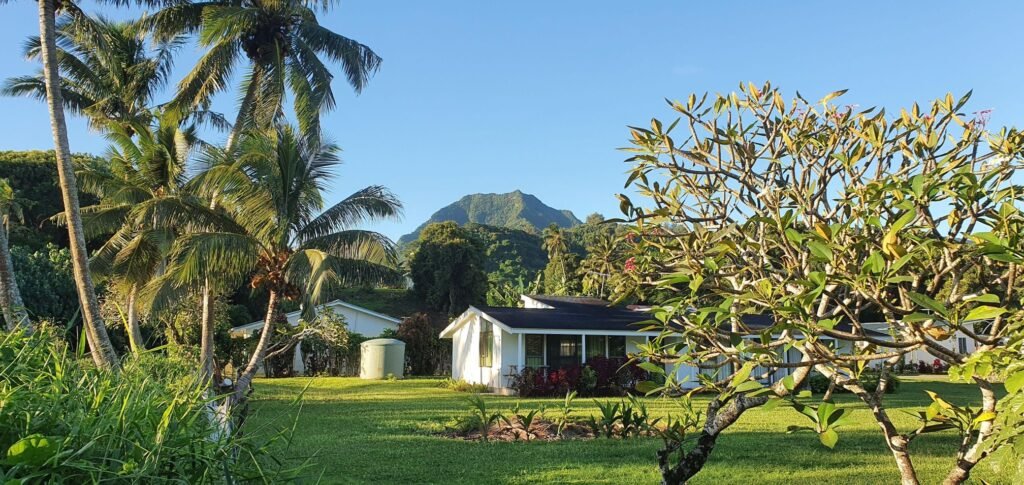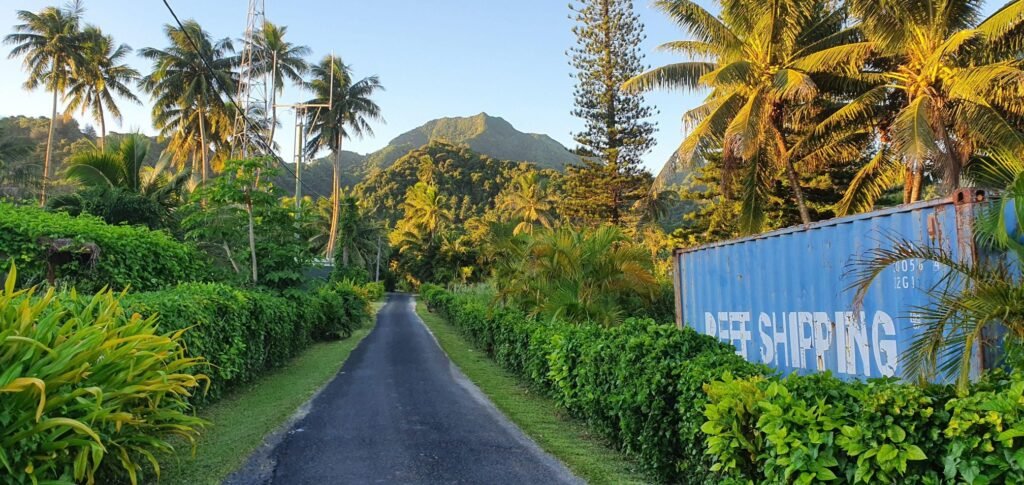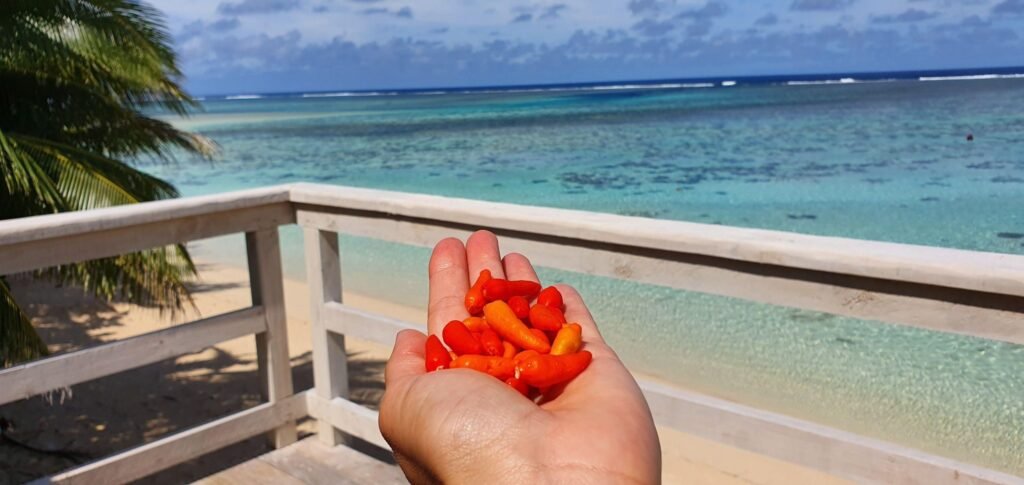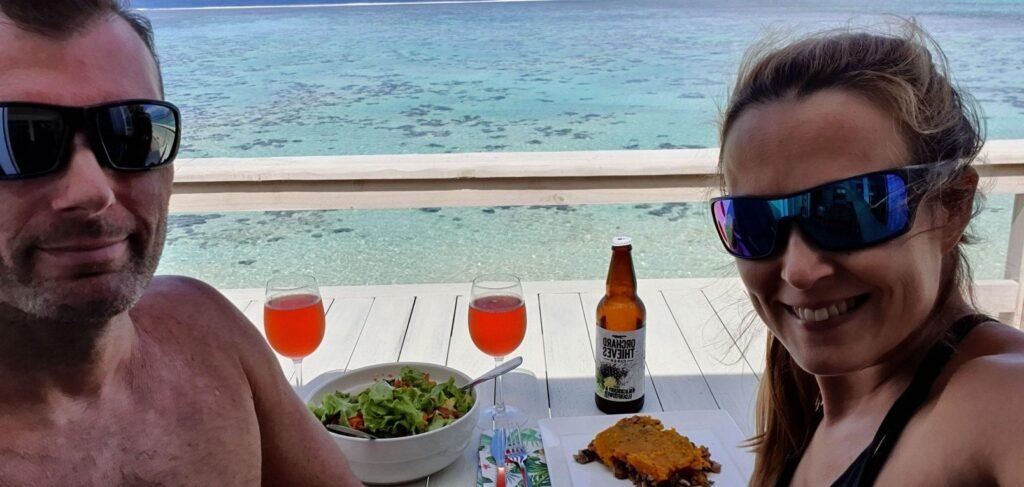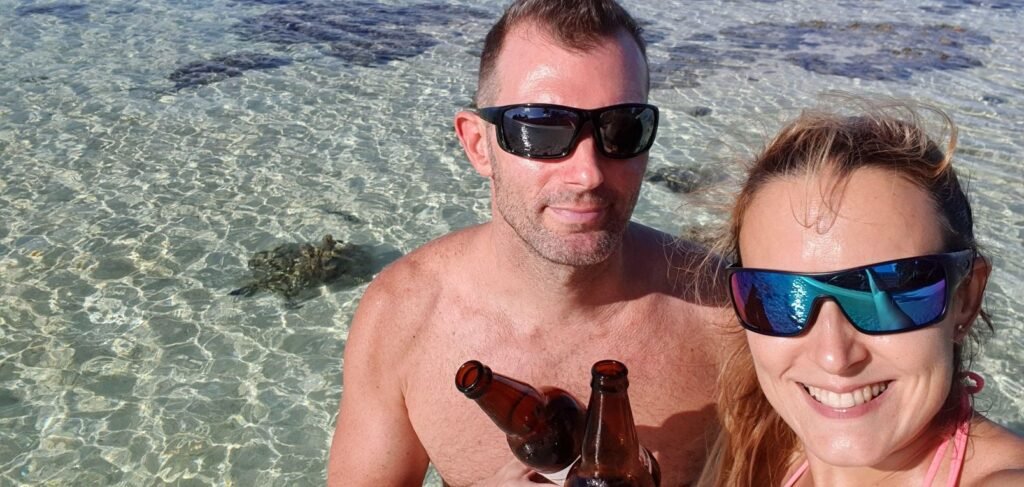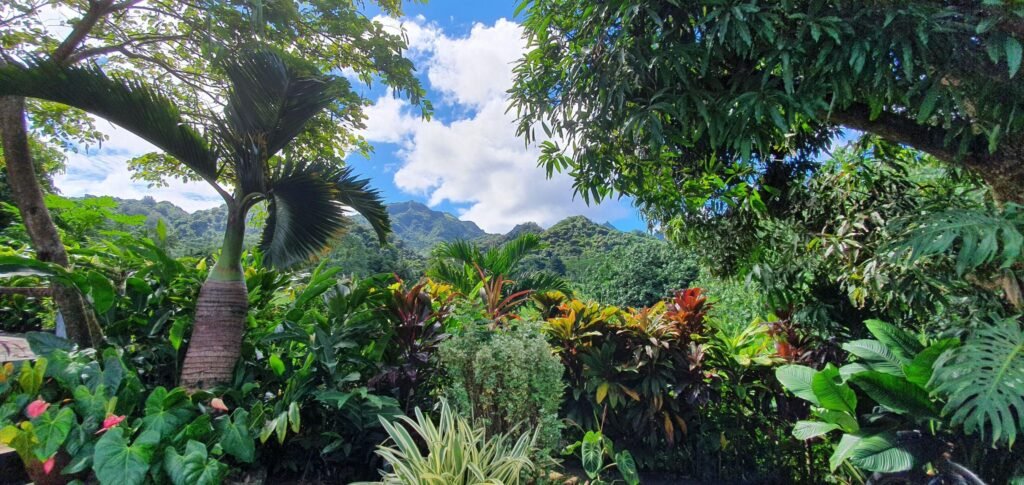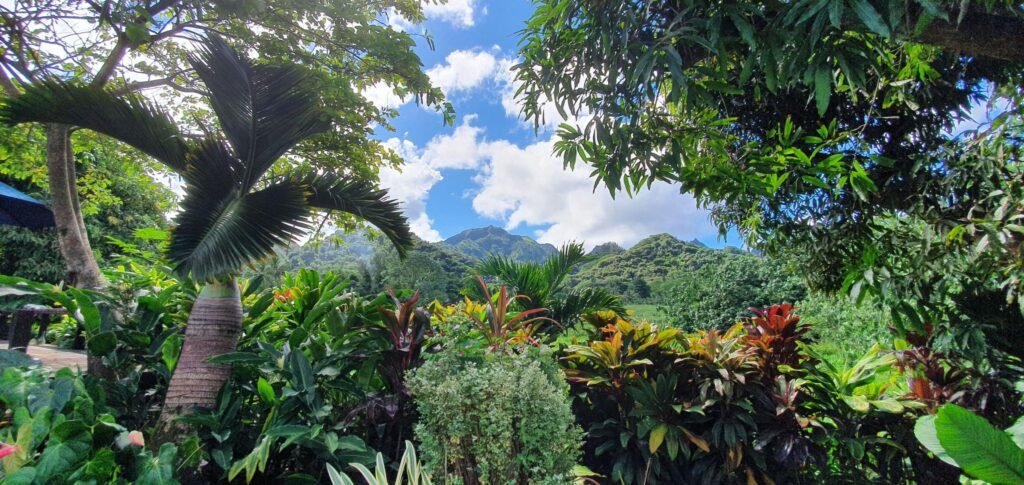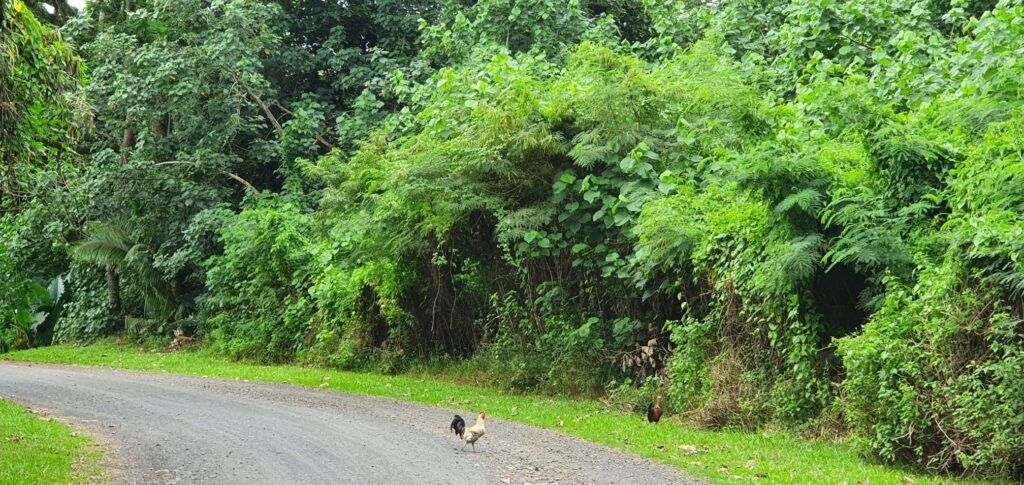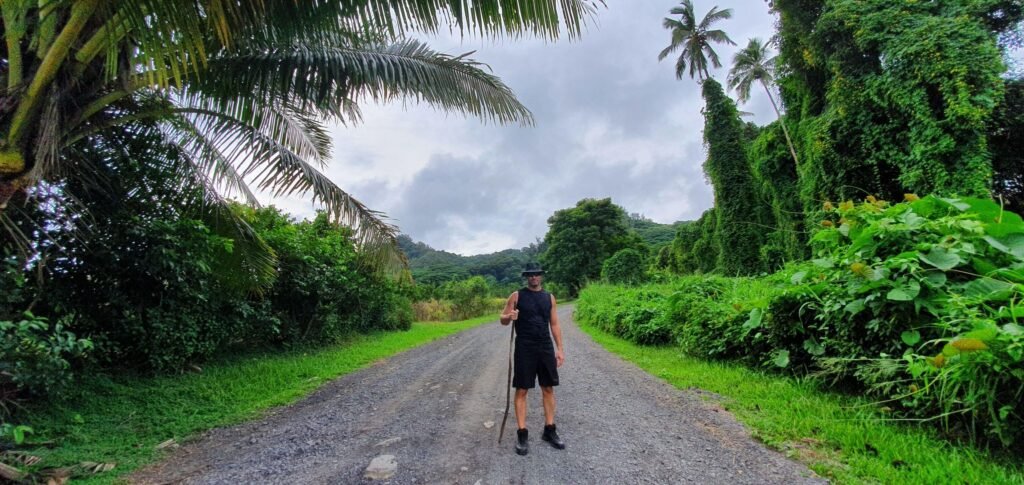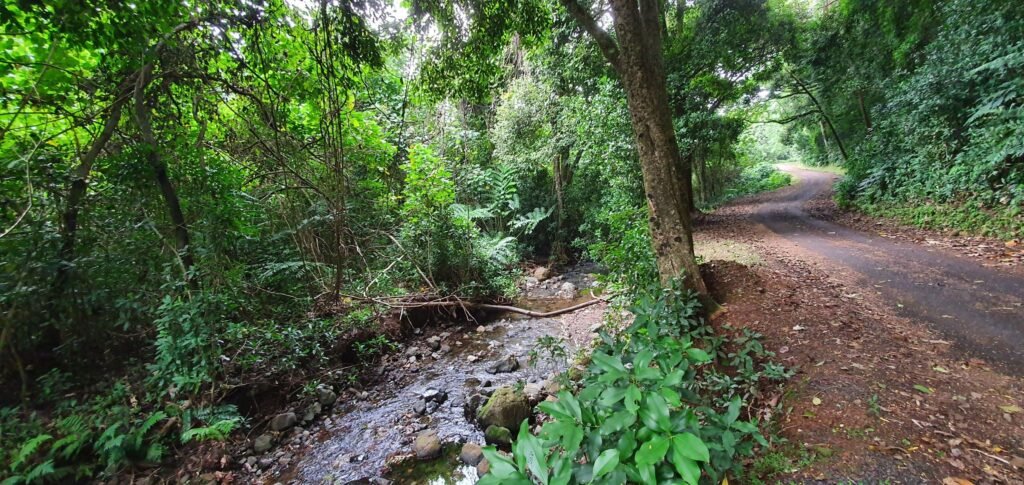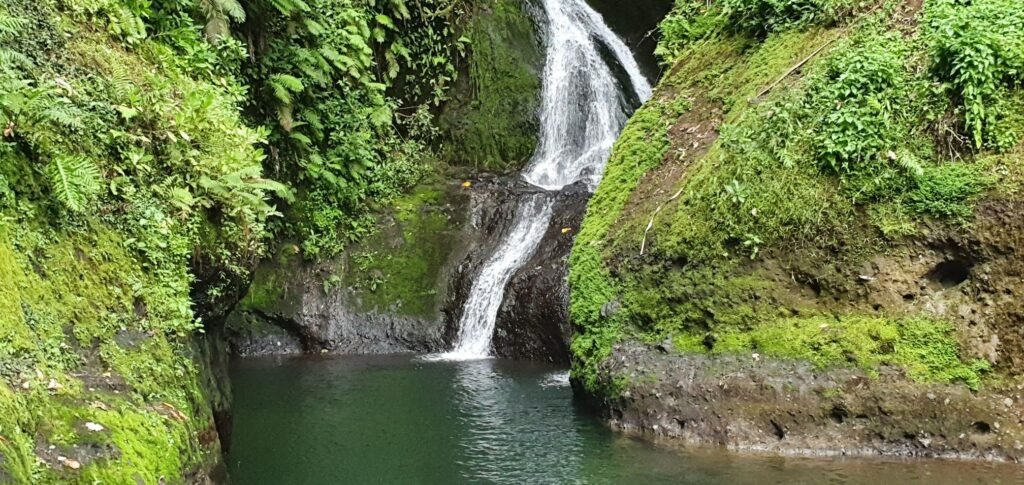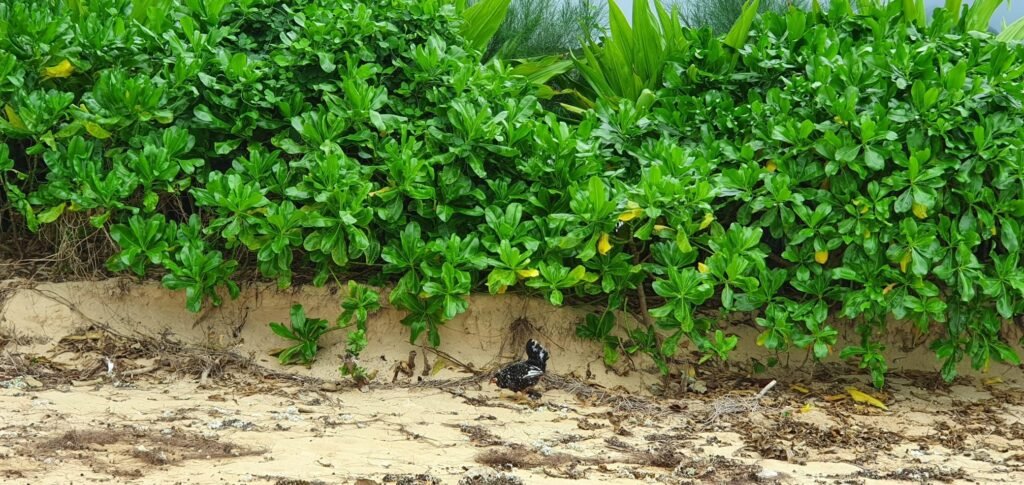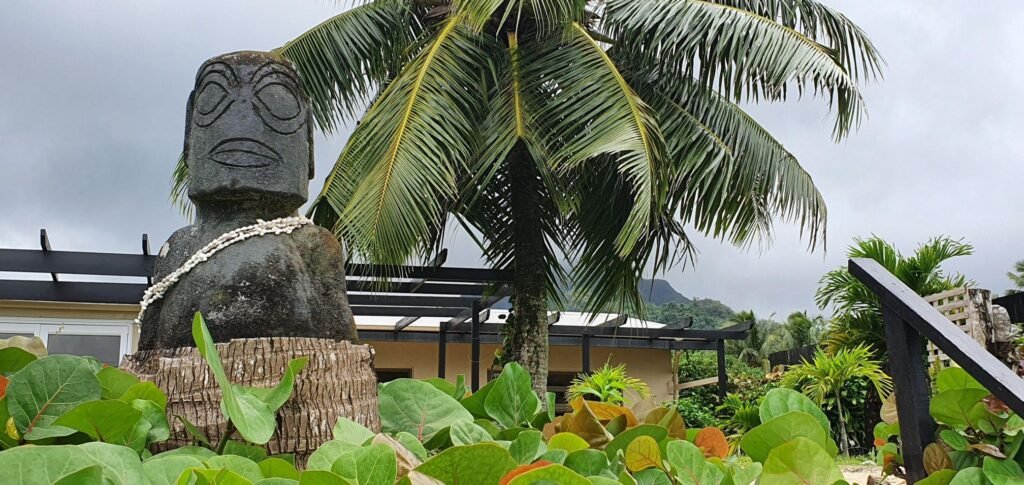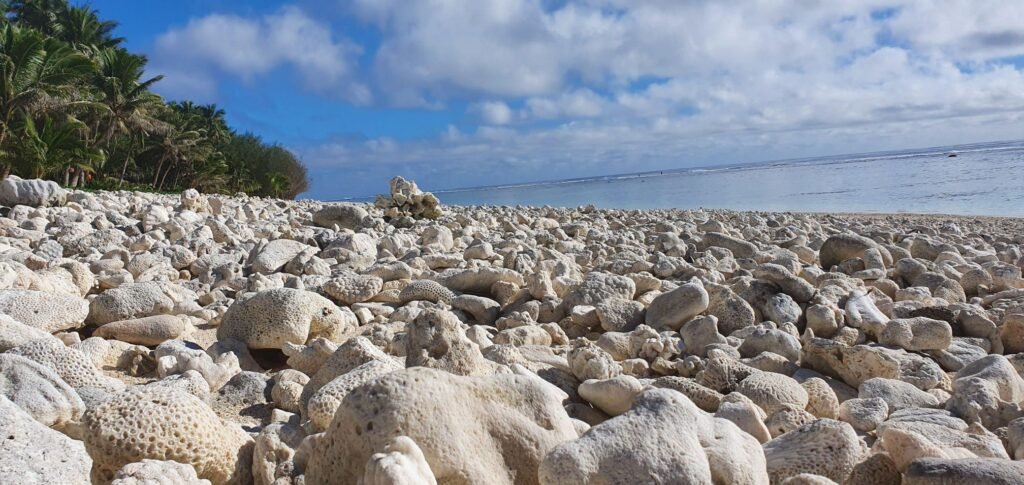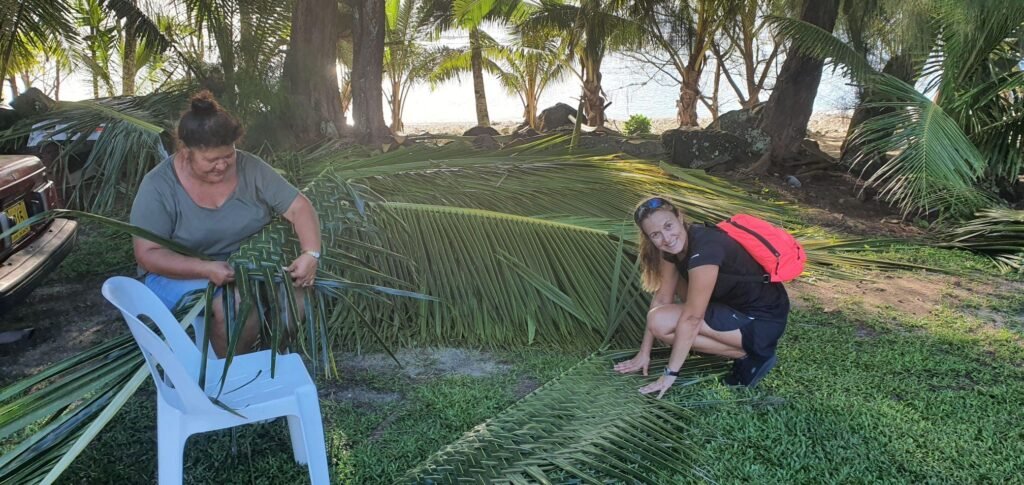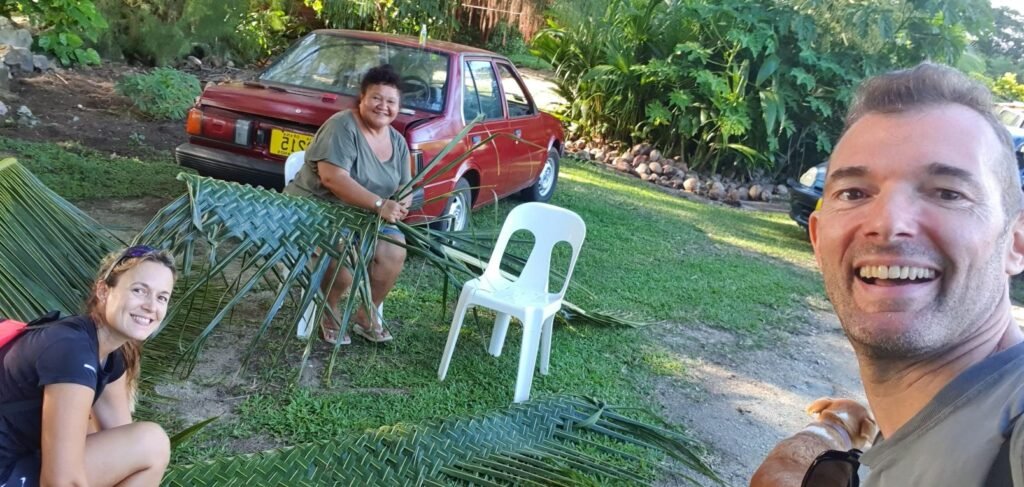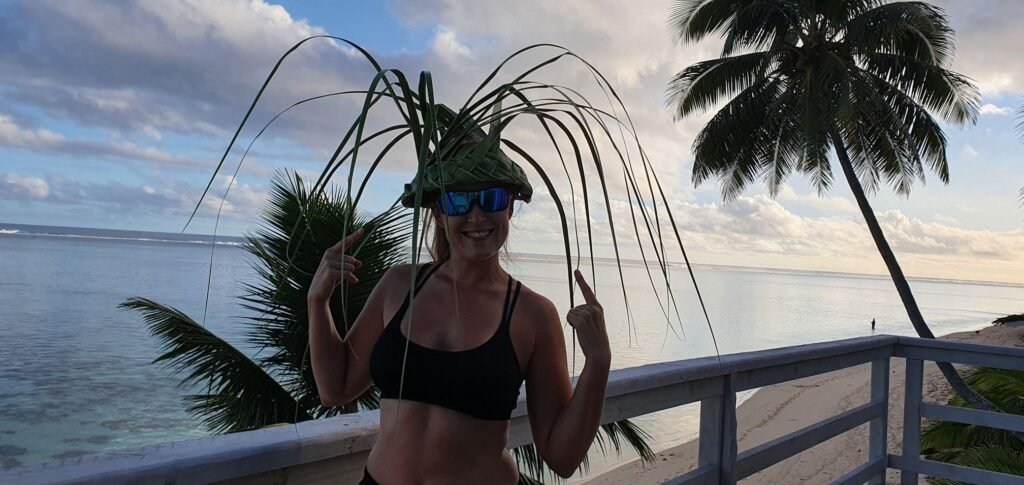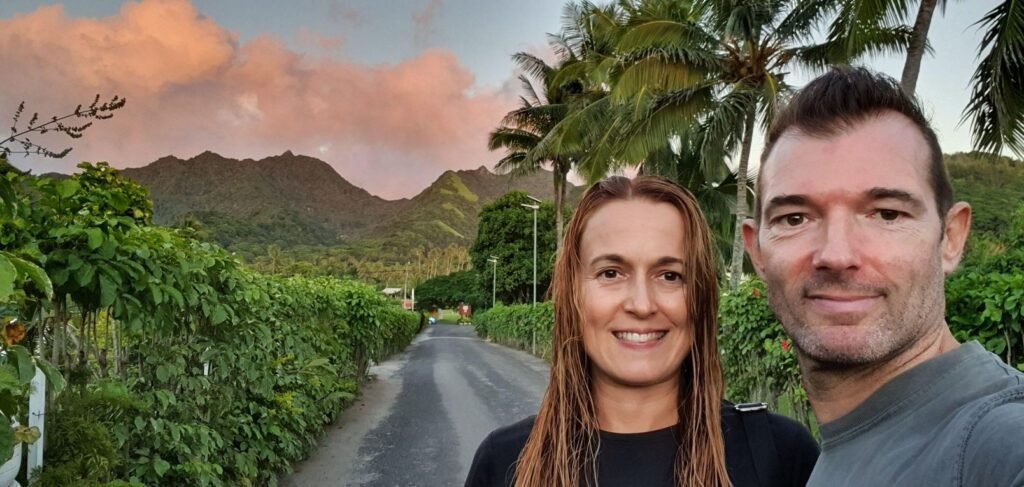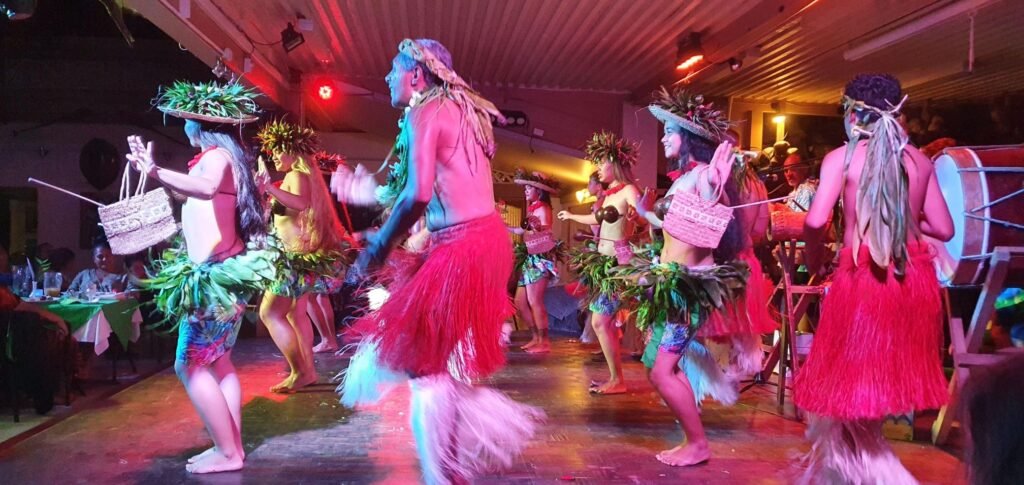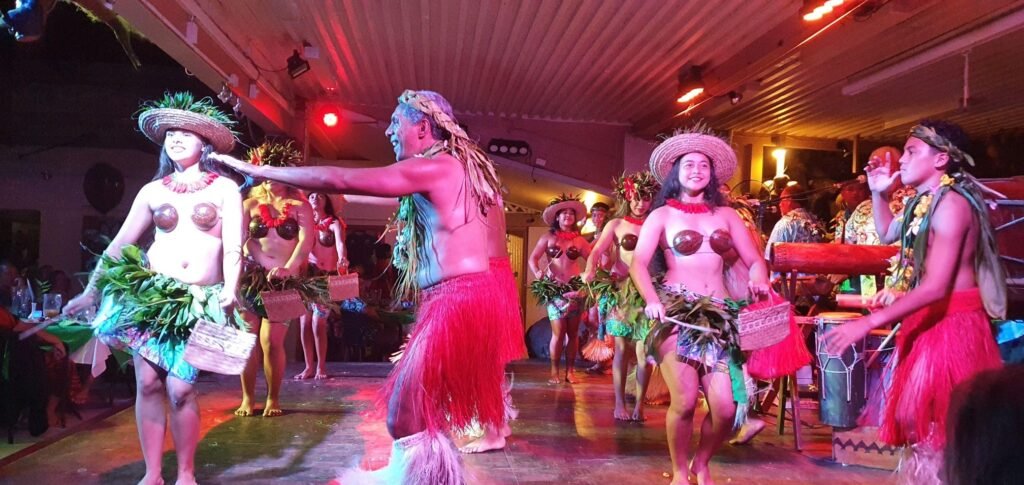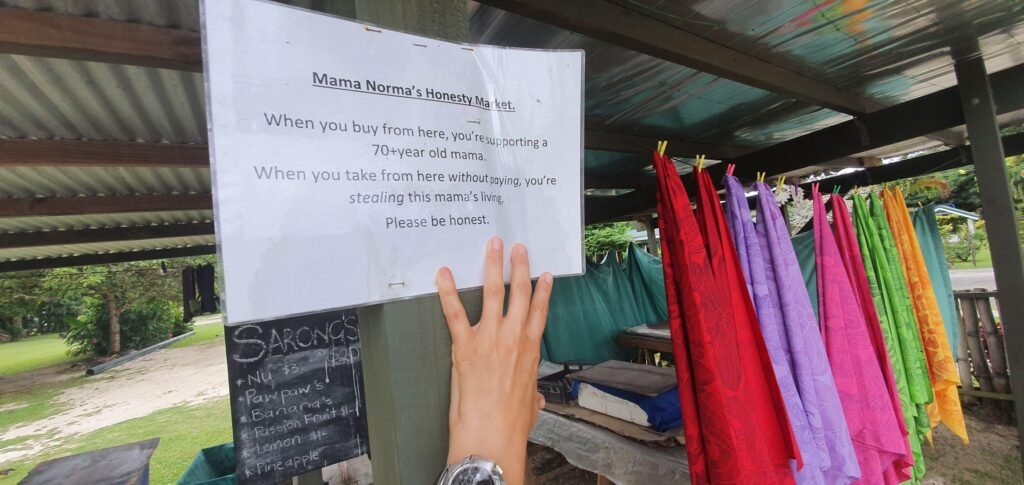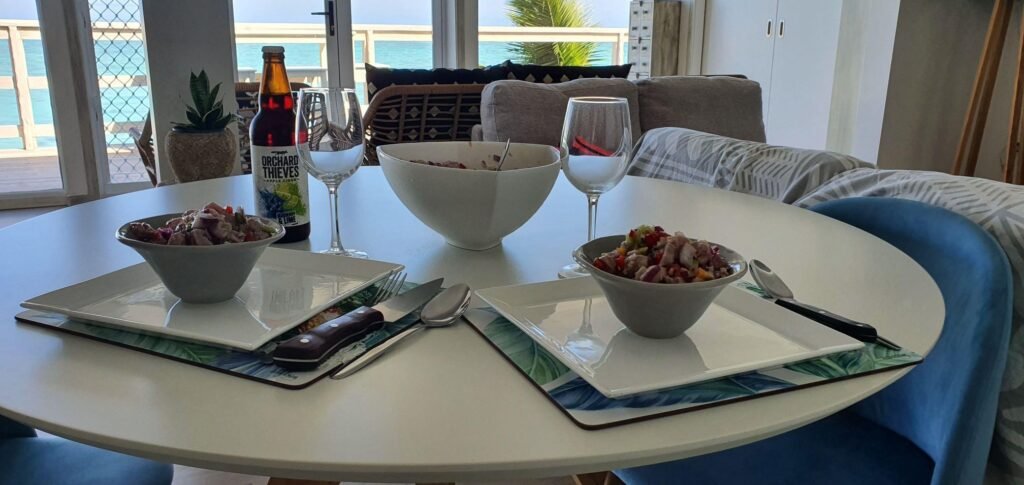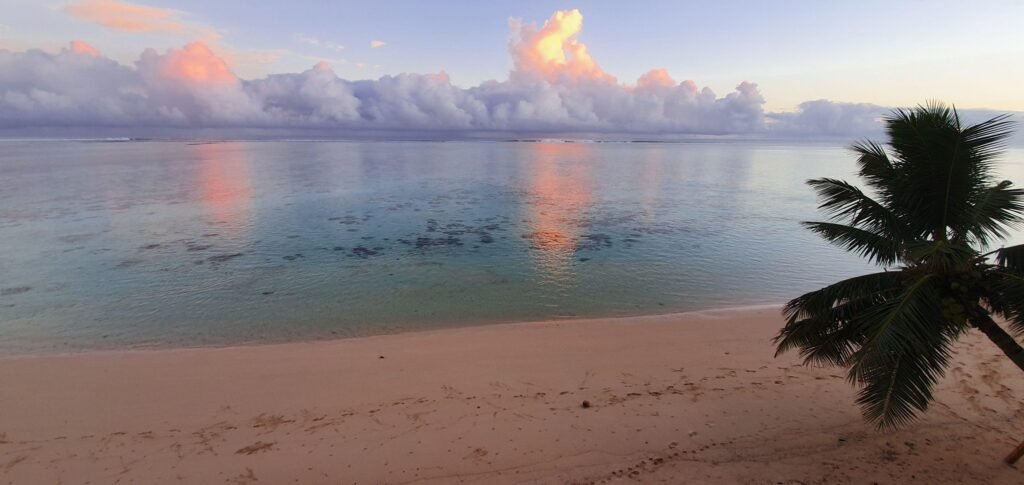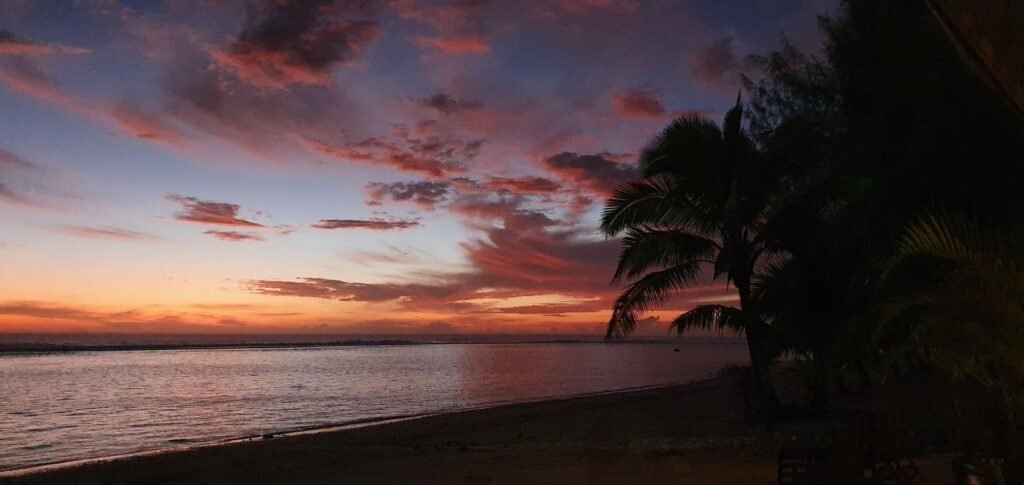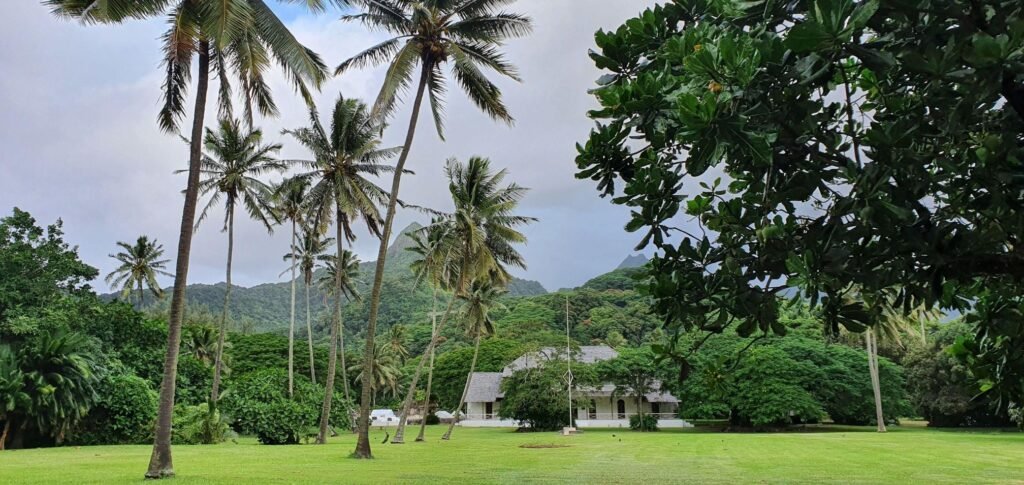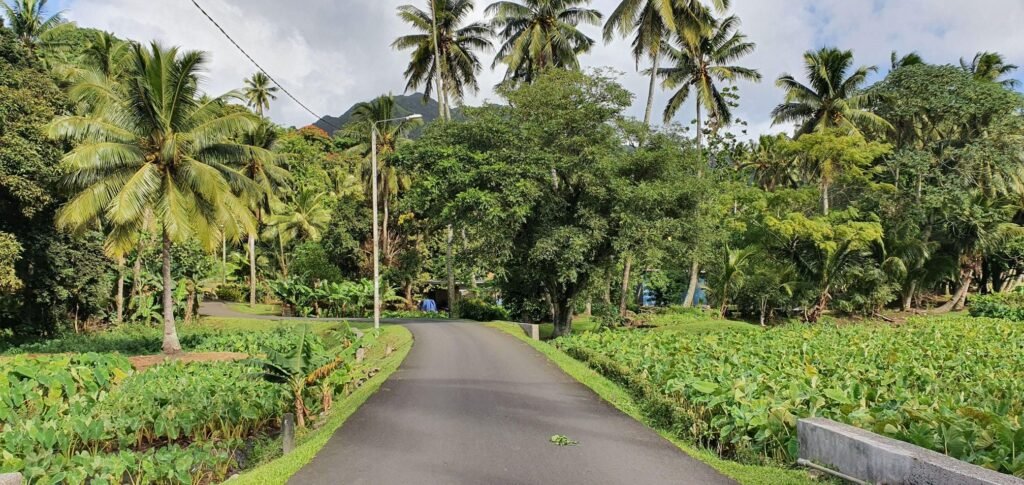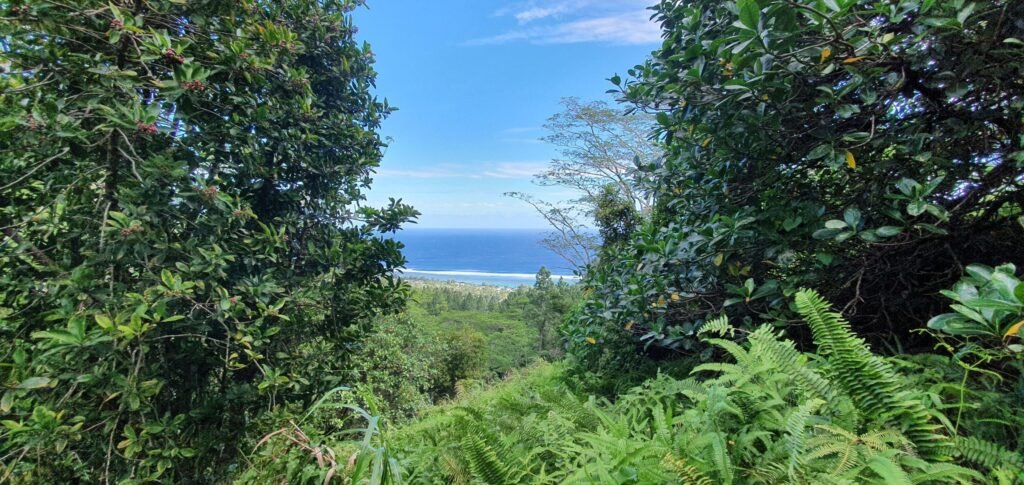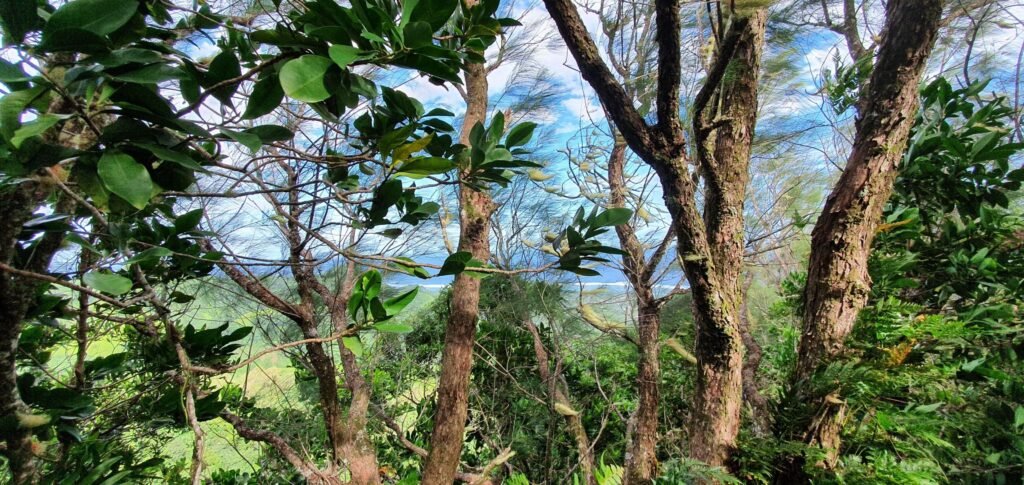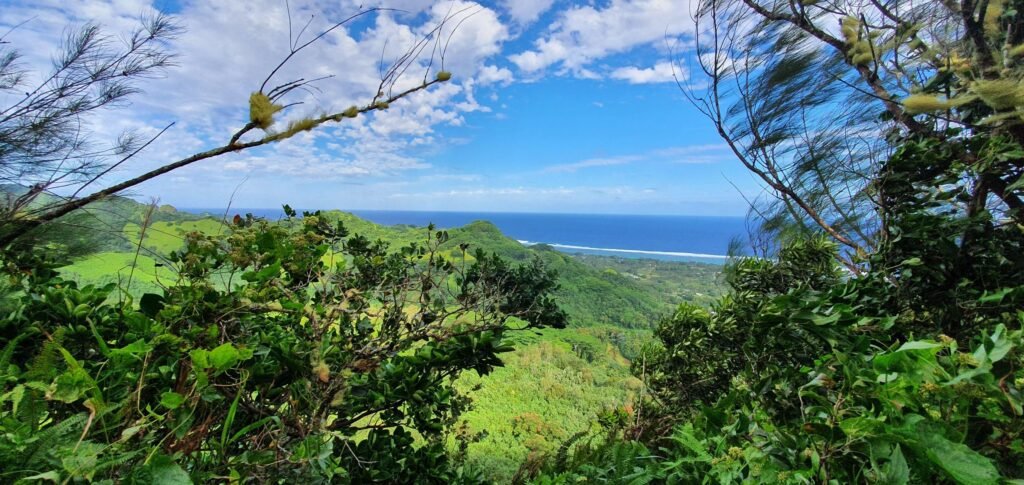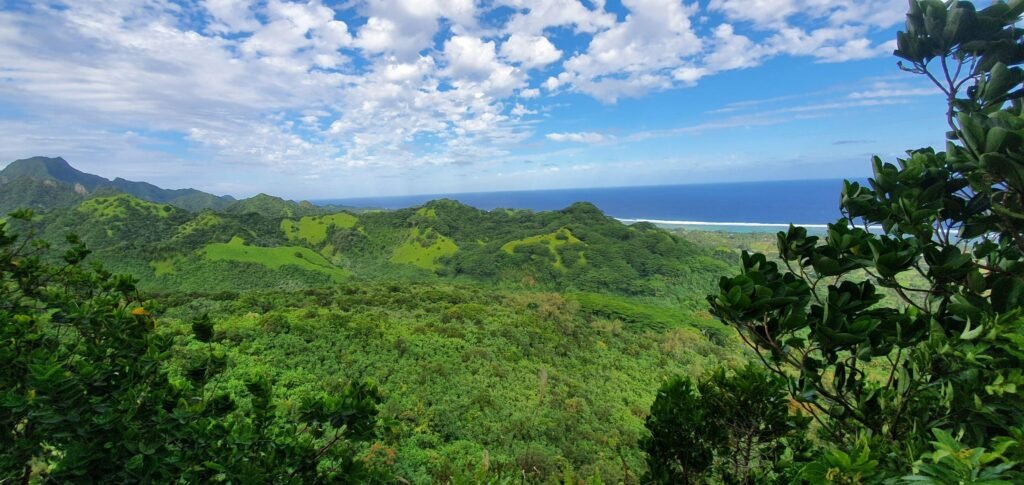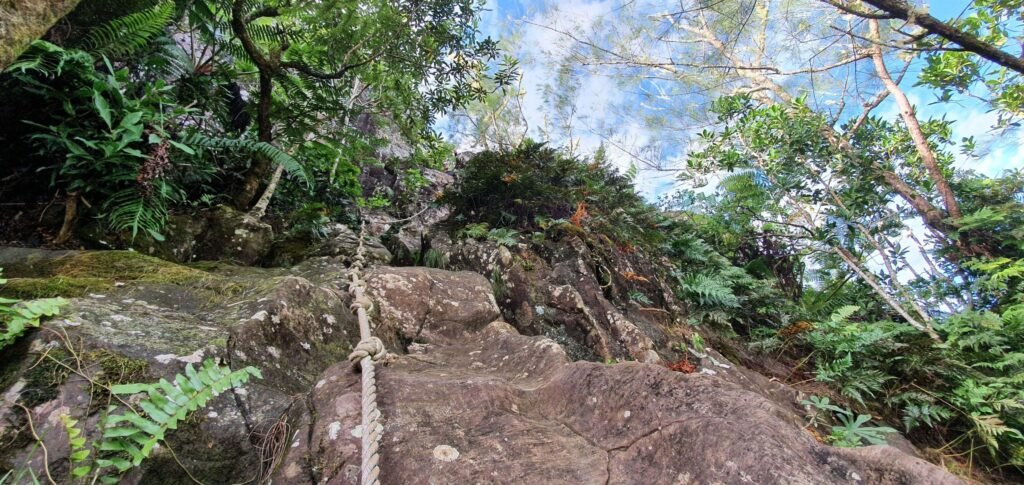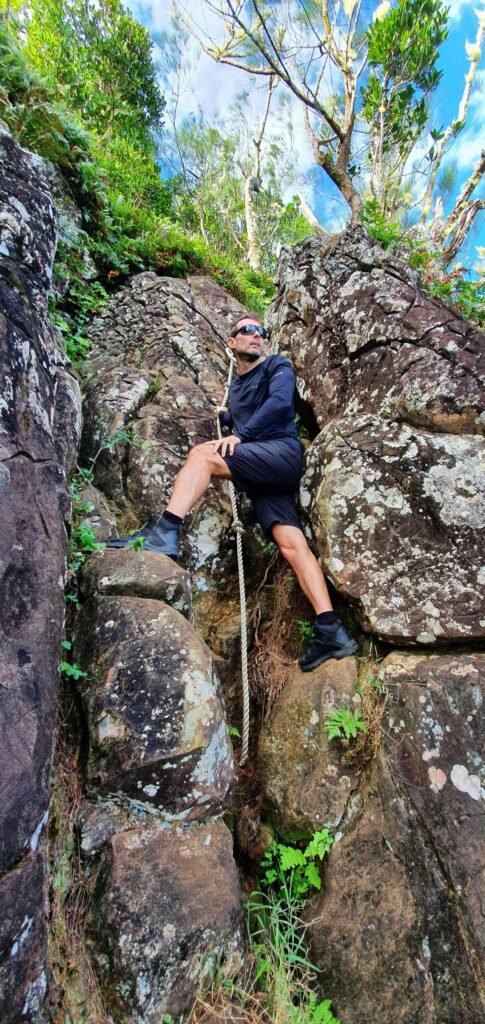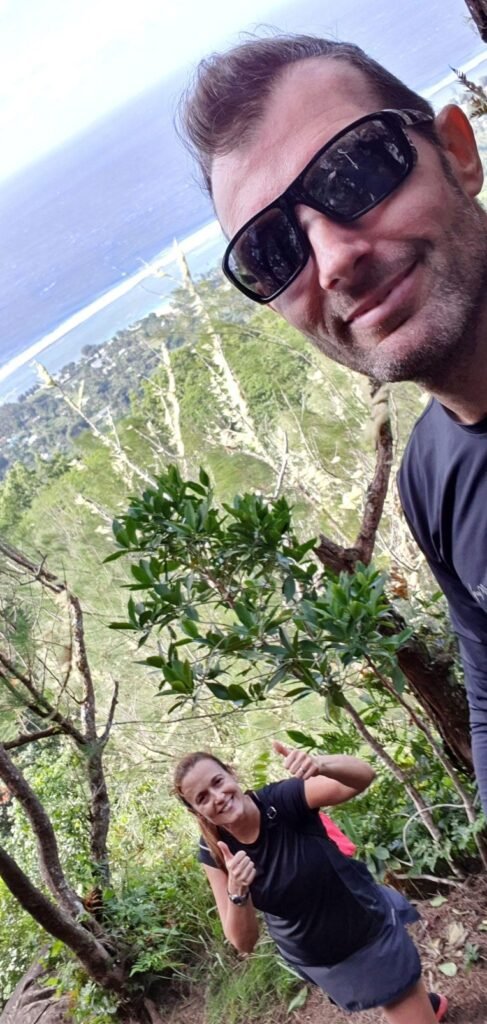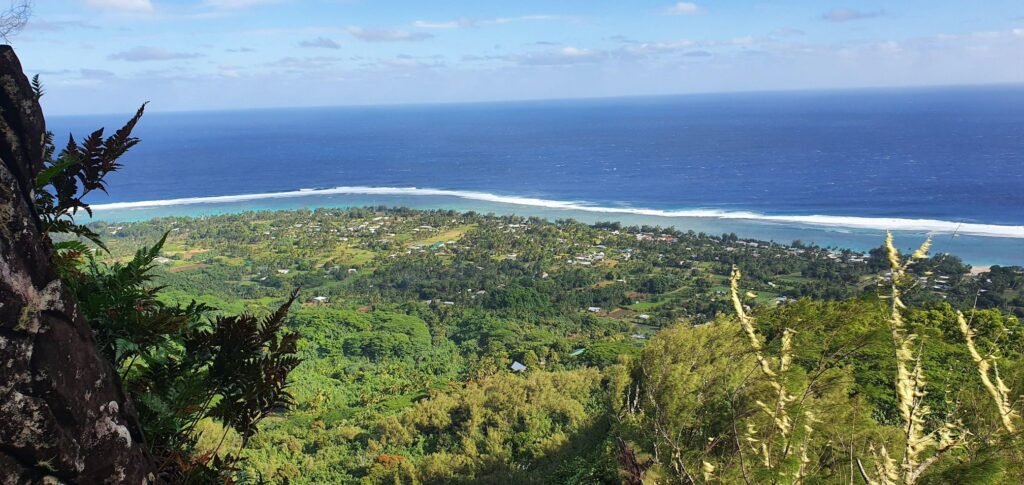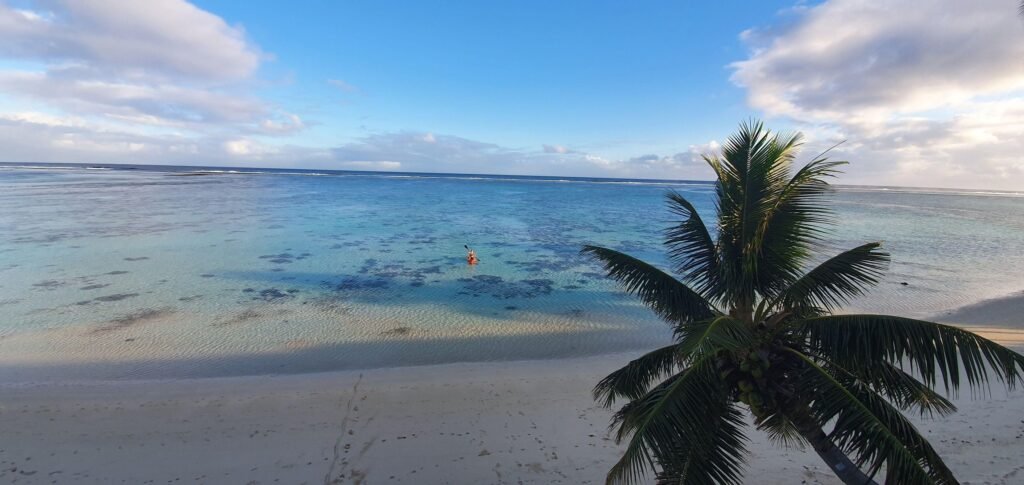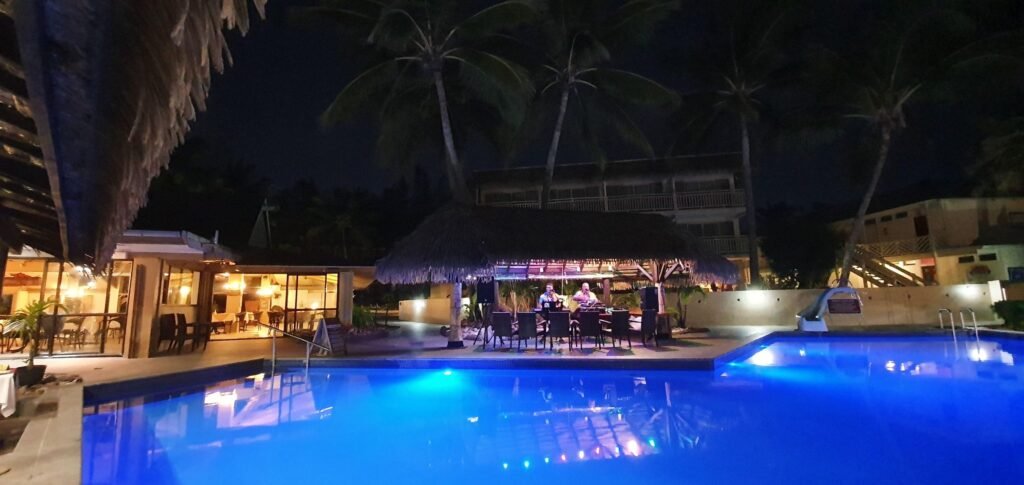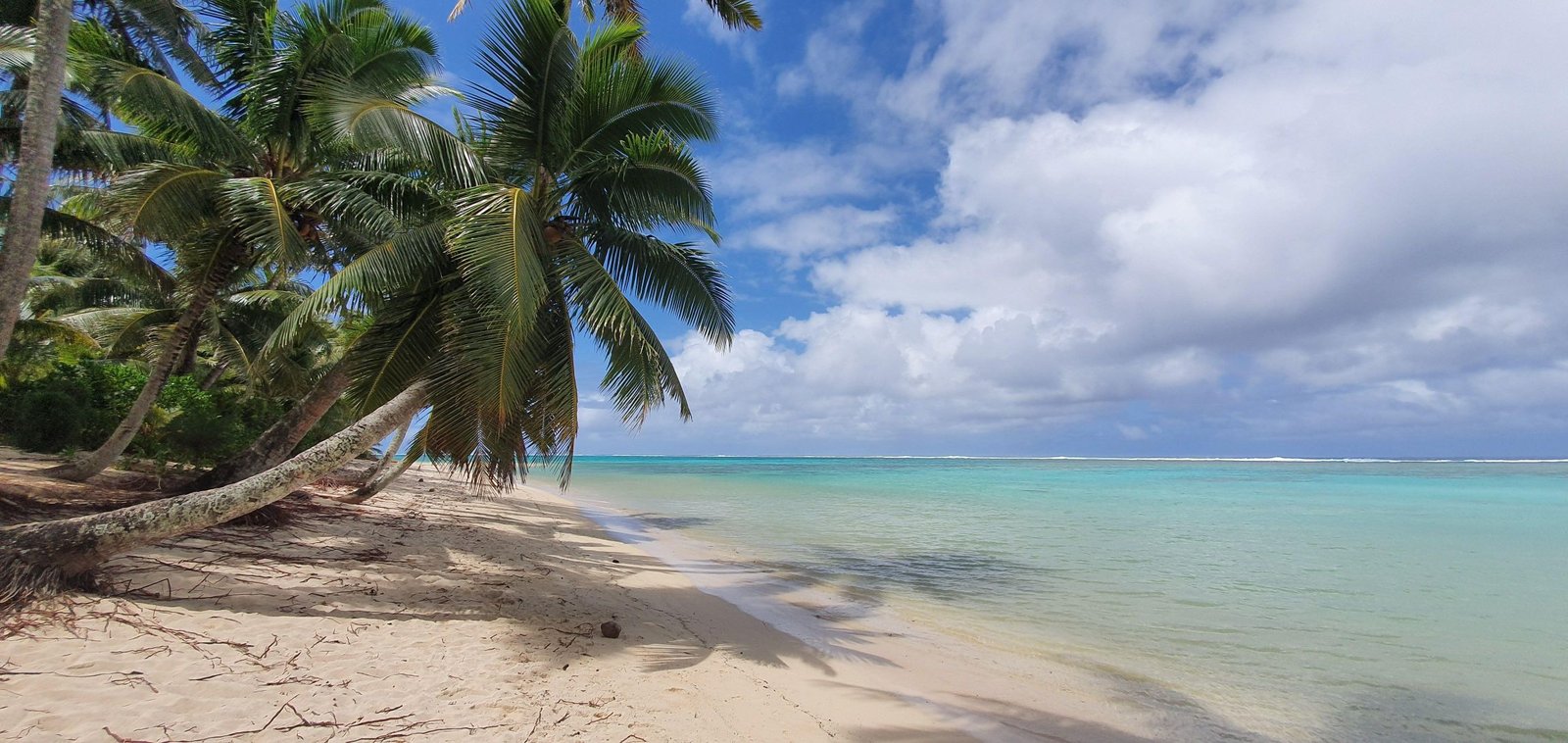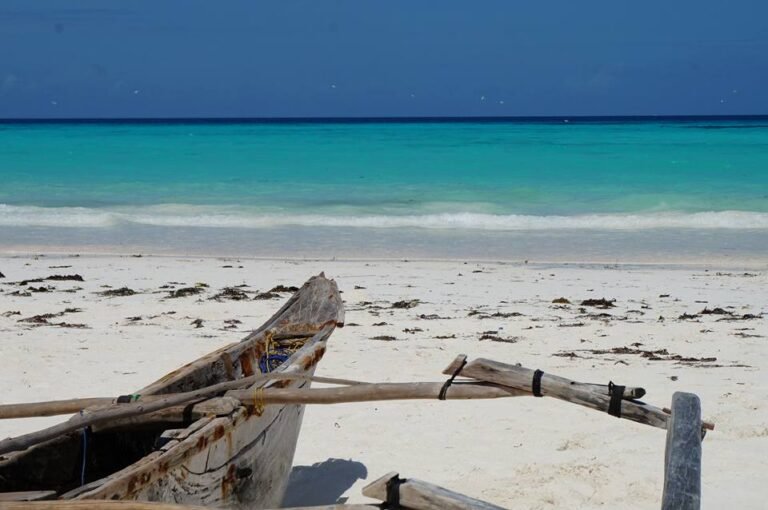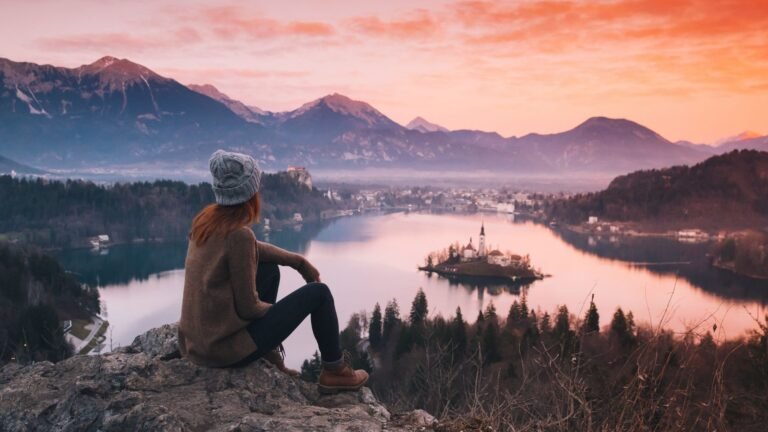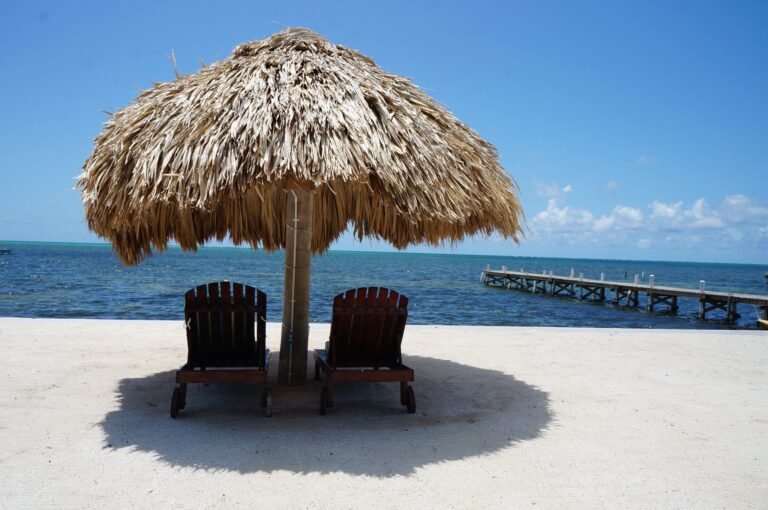The Cook Islands are a country located in the South Pacific, politically linked to New Zealand. The name is to honour Captain James Cook of the British Royal Navy who landed on these islands in 1773. The archipelago consists of 9 mountainous volcanic islands in the south and numerous low-lying atolls in the north, which together have an area of 236 km². The highest point is Te Manga (652 m) located on Rarotonga, the main island where Avarua -the capital of the country- is located. Rarotonga Island has a reef around its perimeter that protects the land from the force and pounding of the ocean. Between the beginning of the reef and the beaches, there is an oceanic lagoon area with abundant marine life, ideal for snorkelling and swimming. The rest of the islands are mostly atolls that range between 2 and 20 km2. Among them are the Aitutaki Atoll, One Foot Island and Honey Moon Island with their incredible beaches, coconut palms and turquoise lagoons protected from the open ocean by the reef.
Tourism is the main source of income for the islands, above the business of banks, pearls and exports of seafood and exotic fruits. Unfortunately every five years there are cyclones that devastate the region. Agriculture also provides incomes, with the export of copra (coconut pulp) and citrus fruits. The rest of the agricultural production consists of tomato, peas, banana, pineapple, coffee, sweet potato, taro and papaya. They also have producers of black pearls in the northern islands such as Manihiki. The Cook Islands are forced to import many food, textiles, fuel, wood, technology and other products that are not produced locally.
BIODIVERSITY
On the Pacific coasts, you can see parrotfish, pufferfish, lionfish, sea cucumbers, dolphins, rays, sharks and whales. More than 100 species of birds inhabit the Cook Islands, of which 26 are species native to the archipelago. Those commonly known as cucumbers or sea worms are long and soft in body and live on the bottoms of the seas and lagoons. As they are a delicatessen for the Chinese community, it happened that groups of Chinese people indiscriminately capture them to dry and eat them. The local community does not approve of this type of behaviour, they are very respectful of the natural resources of the lagoons.
ACTIVITIES OF INTEREST
– Watch a Polynesian dance show: Traditional Maori dances and songs are very popular. The best Polynesian dance show on the island is Te Vara Nui, with fire, songs and a very good buffet. But you can also see representations of Polynesian groups in hotels on the island such as Edgewater Resort.
– Go to a Ura class: If you want to really get involved in Polynesian culture, you should try a Maori dance class at Tupapa Center. There you will learn to dance with Maori girls, mothers and grandmothers to the rhythm of local music, it’s an incredible experience.
– Take a walk along the beaches of Muri, Vaimaanga and Arorangi with adorable local dogs: Whenever you go for a walk you will find a puppy that wants to go with you. Meanwhile, they will try to hunt some fish in the lagoon
– Maire Nui Gardens Botanical Garden: These gardens are very beautiful. If you stay several days on the island, it is worth visiting them.
– Visit Aiutaki, Honey Moon Island and One Foot Island: Aitutaki is located 264 km from Rarotonga, it’s worth taking the plane if you can go at least 3 days to make excursions to nearby islands. See experience Honey Moon Island and One Foot Island.
– Snorkel in Avaaroa Passage and Aroa Beach: As we anticipate the Rarotonga lagoon is beautiful, you will be able to see colourful fish and corals. The best place to snorkel is Aaavaroa Passage, where you will find sea turtles, rays and the best corals on the island. However, you must go exclusively at low tide because all the water in the lagoon comes out through the passage into the open ocean when the tide goes down, causing extremely strong currents that will drag you.
– Sea scooter ride: If you want to go through the passage, another alternative is to schedule an excursion with Ariki Adventures and use a sea scooter. They also provide other kid-friendly activities like scavenger hunts with sea scooters.
– Hiking: You can visit Wigmore’s Waterfall, the ancient extinct volcano Cross Island Trail and Te Rua Manga (The Needle). Wear appropriate footwear to avoid slipping and don’t do the hiking on rainy days and after, because the road gets dangerous.
– Stand-up paddle and kayak in the lagoon: You can go with the boats from your hotel or hire an excursion with KiteSup Watersports. We recommend the evening excursion, with the illuminated stand-up paddles and the fire show on one of the islands in front of Muri. The best thing is that the local dogs climb on your stand up paddle and accompany you on the adventure. They also make you fall when they jump to catch fish and break the fragile balance of the board, but it is part of the experience.
– Chocolate tour & Banana Wine: It’s interesting to see how the purest 100% natural dark chocolate is produced locally. You will also try banana wine (yes, local wine made from bananas) and buy local vanilla beans and a bottle of banana wine as a souvenir. We share their contact on Facebook: Cook islands Chocolate Factory.
– Rarotonga Brewery: Meet a local brewery and taste their products.
– Black Rock ViewPoint: It’s ideal to visit these beautiful black rocks on the ocean, at sunset. They have a spiritual meaning, the ancients Maori believed that the dead made the passage to the other world through the Black Rock area.
– Punanga Nui Market: The market is part of the local culture, every Saturday the community goes to the market to buy fresh fruits and vegetables, flower crowns and to get together to drink juices or eat something with friends. We recommend you try the fruits that are exquisite: mangoes, pineapple, soursop, bananas, guavas and avocados. You can try taro, which is a local tuber that locals eat at almost every meal. Be careful, if it’s not well cooked, it’s toxic! So you better overcook it.
– Rent a bicycle and stroll through the internal streets: If you want to take the opportunity to exercise, you can tour the island by bicycle and enter the internal streets to see the houses and local plantations.
– Take a diving course: The waters of Rarotonga, Cook Islands are ideal for diving. In the course you will learn all the safety measures, you will take boat trips and you will personally see all the fish wealth of the island. More information at Dive Rarotonga.
– Go to church to see a religious ceremony in Maori, listening to their hymns and traditional songs. You must be extremely respectful, dress appropriately, and be quiet during the celebration.
– Whale watching: If you travel between July and October the temperature of the island is cooler but it’s the ideal time to see whales. You can go on a tour to see the whales and their little calves.
TYPICAL FOODS
– Umu: It is the most representative traditional Maori dish on the island. They make a hole in the earth, a fire and place stones, forming a slow cooker underground. Inside this natural oven, they cook meat, vegetables and fruits wrapped in banana leaves for 3 hours. There are several places where you can taste and even participate in the realization of umu/ Ika Mata, raw fish marinated with lemon, covered with a coconut sauce and accompanied by bread or boiled green bananas/ Rori, sea cucumber cooked with banana leaves, browned with onion and garlic/ Kuru Akaki anga ia (it’s an exotic fruit pudding)/ Coconut Delight (It’s made with grated coconut and cassava, fried)/ Being an island the fish is fresh and delicious: tuna, parrotfish, crabs and shrimp/ Among the local vegetables you must try the Taro, a potato-like tuber and Rukau, a kind of spinach, the small leaves of taro/ Local fruits are very tasty: mango, papaya, starfruit, pineapple, banana, coconut, melon and avocado/ Drinks: Local beer from Rarotonga Brewery/ Coconut Water/ Cook Island Poke: It’s made with tapioca, local bananas and coconut/ Kava: It’s a drink made with the root of a plant, it has a strong effect as a muscle relaxant. Don’t say we didn’t warn you!
NOTES
– Bring snorkel and flippers if you prefer to use your own for sanitary reasons (if not, most accommodations provide you with this equipment).
– If you want to buy a Cook Islands souvenir and you can’t think of what, buy a flowered shirt or a flowered island dress. Locals wear colorful shirts and brightly colored dresses with natural flower wreaths at events, celebrations and special days.
– If you like tattoos, Rarotonga is a good place. It has very good Tatoo Artists who make unique Maori designs.
– Tap water is relatively safe, but it can cause gastrointestinal problems. We drank tap water and nothing happened to us. But we recommend you drink bottled water if you don’t want to take risks.
– Internet in Cook Islands is very expensive: You will have to buy NZD50 vouchers to use Internet. There is no free Internet like in the rest of the world -even if you go to the best resort on the island- so keep this in mind when planning your trip. Record movies, update your apps and upload or download material from the cloud before arriving to Rarotonga. Once on the island, it’s a good idea to rest a bit and put technology aside.
– Greet people in Maori with a “Kia Orana”, it means more than hello, it means “have a long and happy life.” Say thank you very much in Maori: “Meitaki Maata!”
HISTORY AND CULTURE
The Cook Islands were first populated by Polynesian peoples who migrated from near Tahiti to the southeast. As the population increased in French Polynesia, they were colonizing the rest of the islands. The first contacts with Europeans took place, in 1595, with the arrival of the Spanish Álvaro de Mendaña and, in 1606, with the presence of another Spanish, Pedro Quirós. In 1764 the first British explorers arrived. Between 1773 and 1779 Captain James Cook sighted and landed in the southern islands. In 1800, the name of Cook Islands first appeared on maps of Russian marines.
After the explorers, the missionaries came to evangelize. In 1821 the Reverend John Williams of the London Missionary Society (LMS) arrived in Aitutaki. European missionaries had an enormous impact on the life of the Cook Islands, totally altering its culture. Some of the things in which they did not intervene and that still remain today are the authority of the tribal chiefs or Ariki, the traditional system of inheritance of the land and the Maori language. The British took formal control of the Cook Islands in 1888. The majority of the inhabitants are ethnic Polynesians (81%), with mixed-race (15%), European (2%) and other minorities. The most popular sport in the Cook Islands is soccer.
The Maori are quite closed in their circle, they usually practice inbreeding, they don’t mix as much with “papaas” as they call foreign whites. However, the new generations are more open and flexible with this topic. Traditionally in Polynesian culture, fat represented power and wealth, which of course changed as Western models of beauty were incorporated. They have a democratic parliamentary system of government in free association with New Zealand. Defence and external representation are the responsibility of New Zealand, which must consult the Cook Islands. Citizens of the Cook Islands have New Zealand citizenship as well as their own Cook Islands nationality. The Maori people are very religious and traditional, they have several typical celebrations with dances, live music, artisan productions and typical clothing. Family is very important to them.
Don’t be surprised to see many graves at the doors of the houses and in beautiful lots overlooking the sea, it’s part of their tradition to honour the ancestors. We imagine that when there is no longer room for young people to build their houses, they will use these spaces, but in general, they are very reluctant to change traditions. The lands are inherited and bequeathed within the family. Foreigners cannot own land in the Cook Islands. All they can do is buy a 60-year lease that entitles them to build and use the land or live on the property. At the end of that period, the lease can be renewed but if the owner family does not wish, the land and everything built, will come back to the Maori family. The heirs can define what lands each child and grandchild receive, which is often the cause of serious family conflicts.
| Capital | The capital is Avarua and is located on the island of Rarotonga. |
| Vaccines | – Tetanus-diphtheria, whooping cough, Triple Viral (measles, rubella, mumps), Hepatitis A, Hepatitis B, Typhoid fever, Flu, Pneumococcal – Vaccines against yellow fever and cholera are mandatory for travellers from countries where these diseases exist. |
| Time | Check the time in the Cook Islands in 24 Time Zones. |
| Change | Check USD / NZD exchange rate at The Money Converter. |
| Language | – The official languages are English and Cook Islands Maori (also called Rarotongan). – Other languages are also spoken such as Tongarevan, Rakahiki and Pukapukan. |
| Currency | NEW ZEALAND DOLLAR (NZD) |
| Transportation | – You can rent a motorcycle or car to explore Rarotonga Island. Contact Polynesian Rentals. – There are also buses, one that goes in a clockwise direction and another that goes in an anti-clockwise direction (5 dollars one way, or 8 you buy round trip). – You can rent a bike too in Polynesian Rentals. |
| Temperature / Climate | – Maximum 29 °C/ Minimum 20 °C – The climate is tropical, moderate with some winds. There may be cyclones and typhoons from November to April which affect air traffic and supply networks. The region is subject to frequent movements of the tectonic plate, which can trigger tidal waves and tsunamis. – The dry season is from May to October but it is also the coldest. From January to April there is much more rainfall but it’s hotter. |
| Religion | – Christianity (most of the population professes Protestantism, there is a Roman Catholic minority and also Seventh-day Adventists). – The Cook Islands community is very religious, they attend the Christian Church service every Sunday in their best suits, hats, dresses and make generous contributions. You pray and thank God before eating, in university classes, in schools, at official events and even in gymnastics and dance classes. – Due to this religious culture and this traditional spirit, it’s not recommended to go around the island in a bathing suit (on the beach of course it’s ok), don’t even think of doing topless. – Before the conquest of the island by the British, the Maori community was polytheistic, polygamic and the women did not wear anything that covers the upper part of their body. |
| Visa | If you have a European passport and your stay is 30 days, normally you will not need a Visa to visit the Cook Islands. Check the current visa conditions at your country’s embassy. |
| Airport | RAR (RAROTONGA) / AIT (AITUTAKI) |
| Population | 17,459 (year 2016) |
| Plugs | – Type I (three rectangular legs) – If you don’t have this plug in your country, don’t forget to bring your universal adapter. |
